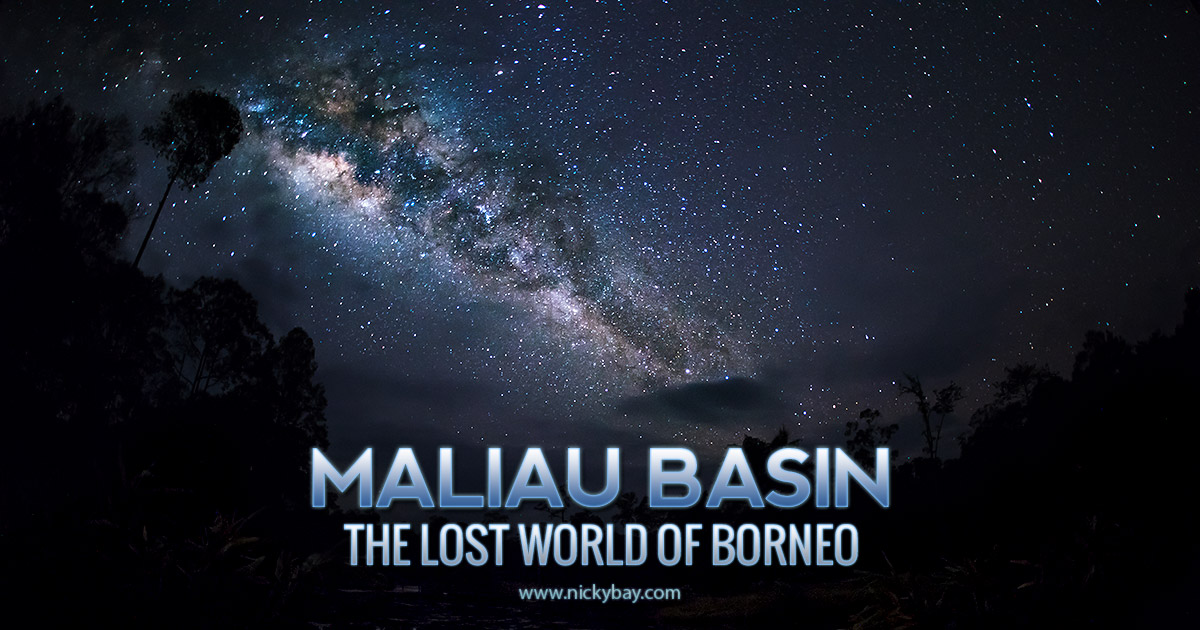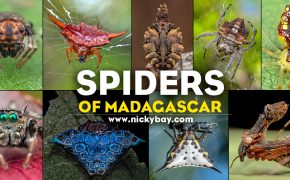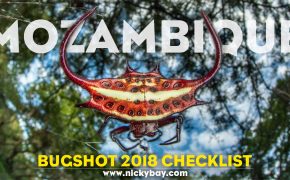Maliau Basin – The Lost World of Borneo
For the longest time, I had been wanting to visit the Lost World of Borneo. Maliau Basin is one of Borneo’s least-travelled gems due to its relative inaccessibility, high price and difficulty for foreigners to arrange a trip. The Maliau Basin Conservation Zone remains one of the most pristine rainforests of Borneo. It’s a self-contained forest, placed inside a saucer-shaped basin surrounded by cliffs and promising the possibility of rare and endemic flora and fauna.
In this trip, I stayed at the Maliau Basin Studies Centre (MBSC), situated on the outer edge of Maliau Basin.
It would ideally have turned out to be an exotic fauna buffet, but the trip clashed with El Nino and the resulting drought; the longest since the place was set up 20 years ago.
Nevertheless, we tried our luck on the trails and had several interesting finds. This post documents some of those, along with a few behind-the-scenes shots to give a more intimate view of the trip. Plain looking “record” shots were excluded; feel free to check out the complete collection from this trip on my Maliau Basin Flickr albums.
Many thanks to Dennis for the logistics and administration, Chris for loaning his equipment for the milkyway shoot, Francis and Nick for the company during our endless walks into the trails!
Peninsular Malaysia
Brief view of the Malaysian Peninsular before we went above the clouds.
Arrival in Tawau
Arrived in the tiny airport of Tawau, as long as an MRT station in Singapore.
Sponsored by IKEA
Dedicated van to bring us to Maliau Basin — approximately 5 hours on the road from the airport.
Teatiam
No Kopitiam, Teatiam also can! Got hungry really quick and had to grab a bite.
Palm Oil Plantations
Sadly, we only saw palm oil plantations during most of the 5-hour journey.
In the Van
After 4 hours, still no forest but at least we no longer see palm trees!
Registration Centre
Arrived at the registration centre, with another hour to go on a 4WD.
Where is the Milkyway?
While waiting for the 4WD to arrive, Chris checked out the milkyway locations.
Replica of Maliau Basin
In front of the Maliau Basin Studies Center was a roundabout with a replica of Maliau Basin. We were just situated at the edge of the basin.
Stairs to Welcome Area
One of the many flights of stairs to climb in order to reach our rooms.
Map of MBSC
Found this map at the welcome center.
Shoot!
We were here to shoot bugs, and the guys found a really big bugger!
Rooms Annex
How our rooms looked like from outside.
Maliau Laboratories
We gate-crashed into the labs, hoping to meet some entomologists who could point us to good locations with better bug populations. Unfortunately, they said that the place was almost barren due to the drought.
Maliau Basin Replica
Found another replica of Maliau Basin in one of the exhibition rooms.
Dinner
The food served at MBSC was really good compared to all other nature parks that we’ve been to. Could see that there were also visitors from local schools as well.
Bearded Pigs
There was a family of bearded pigs that frequent the dining area, happily rolling in the mud.
Milkyway @ Dining Area
Couldn’t sleep at all on the first night, possibly due to the heat. Ventured out at 3am to be greeted by a sea of stars. Took this shot using Chris’ camera and lens. This was only possible after 12am after the power generators were switched off, with no urban lights for miles.
Milkyway @ Dining Area
Away from the dining area, we could see that the milkyway was slowly moving up. Well, technically we were rotating away…
Milkyway @ Entrance of MBSC
Last milkyway attempt at the lake in front of MBSC.
Which trail?
The trails near to MBSC were pretty straightforward. There is a 800m road towards Belian Camp, flanked by parallel trails on both sides. Beyond Belian Camp, cross Belian Bridge and there would be the tree top walk to the right and another trail to the left.
Heat Wave
Walking by the road was faster, but we were exposed to the intense heat.
Belian Camp
Beyond Belian Camp lies the Belian Bridge.
Maliau Suspension Bridge
Start of the bridge, which we also called the Belian Bridge.
Belian Bridge
The suspension bridge didn’t seem too stable, so we walked with caution.
View from Belian Bridge
The river water was dark, still and obviously below normal levels.
Maliau Skybridge
After Belian Bridge was a tree top walk called Maliau Skybridge.
Ready to Climb!
Nick and Chris were eager to climb to the top to take some panoramic landscape shots of the jungle.
Up we go!
Didn’t seem as easy as they thought, resting a couple of times to catch their breath. Turned out that there wasn’t much of a view as it was still under the forest canopy.
Wild Goose Chase
Someone said that there were sightings of a lantern bug just 10 minutes away from MBSC. We probably should have asked if it was 10 minutes on a 4WD…
Selamat Jalan
“Anything that needs improving, please tell us.”
“Anything that’s good, please tell others.”
Sungai Simpan
River? What river? Everything seemed dried up.
Fish Market
After leaving MBSC, Dennis brought us to the local fish market with lots of fresh seafood.
Crabs!
Lots of live crabs.
Sang Nyuk Mee (生肉面)
Took a quick lunch before catching our flight. Delicious! Visitors to Sabah must try this. Why don’t they have this in Singapore?
Deadly Breath of El Nino
The devastating effect of the weather was reported on the papers.
Trashline orb weaver spider (Cyclosa sp.)
Saw several Cyclosa with beautiful stabilimentum on their webs.
Trashline orb weaver spider (Cyclosa sp.)
This is the typical “trashline” built in the middle of its orb web. A spacing is created in the middle of the trashline for the spider to slot itself in for the perfect camouflage.
Orb weaver spider (Neoscona sp.)
This brilliant green Neoscona can be seen in Singapore too but it is not too common.
Orb weaver spider (Araneidae)
Have not figured out the genus for this araneid yet. It has a colourful folium on its abdomen!
Orb weaver spider (Neoscona sp.)
Classic Neoscona. It was found hiding in the foliage, rather than out on its web.
Orb weaver spider (Deione sp.)
Interesting little male araneid. Suspecting that it is close to Deione lingulata that hasn’t been recorded in Sabah yet.
Cross spider (Argiope sp.)
One of many juvenile cross spiders. I was interested to see the adult with hope that it would be different, but couldn’t find any.
Long-legged sac spider (Calamoneta sp.)
Have seen this in other parts of Sabah as well.
Sac spider (Pristidia sp.)
Classic clubionid.
Sac spider (Pristidia sp.)
Clubionids can be easily recognised by the row of 6 eyes at the bottom, and 2 eyes on top (among other characters).
Sac spider (Pristidia sp.)
Sub-male clubionid with a darker abdomen.
Sac spider (Clubionidae)
Probably a Clubiona which is relatively common in Singapore as well.
Ant-like sac spider (Corinnidae)
This corinnid is new to me, possibly Apochinomma or Castoponera.
Ant-like sac spider (Medmassa sp.)
Medmassa is very commonly seen on tree trunks.Ant-like sac spider (Medmassa sp.)
Found the corresponding male just a few centimeters away!
Ant-like sac spider (Corinnidae)
Thought that this was also a Medmassa, but I’ve never seen one on a leaf and am not really sure now.
Ant-like sac spider (Sphecotypus sp.)
This is my first sighting of Sphecotypus with a distinct constriction in the cephalothorax to mimic an ant.
Ant-like sac spider (Sphecotypus sp.)
A view of the eyes, just to be sure that it is a corinnid. 🙂
Ant-like sac spider (Sphecotypus sp.)
Lateral view of this awesome ant-mimic!
Spiny-legged sac spider (Teutamus sp.)
Teutamus is a rarely seen liocranid that can be found in the forest litter.Spiny-legged sac spider (Teutamus sp.)
The carapace margin is undulating with lateral extensions.
Wandering spider (Ctenidae)
Common one, just took a record shot.
Long-legged wandering spider (Acantheis sp.)
This Acantheis has a relatively good camouflage on the tree bark.
Long-legged wandering spider (Acantheis sp.)
It was contentedly munching on supper.
Long-legged wandering spider (Acantheis sp.)
This has the more typical pose when we found them.
Long-legged wandering spider (Acantheis sp.)
Interestingly, the spider appears to be able to match its colours to its surroundings!
Two-tailed spider (Hersiliidae)
This shows that we really have to be careful when placing our hands on tree trunks.
Two-tailed spider (Hersiliidae)
They were also very well placed on brown bark.
Two-tailed spider (Hersiliidae)
Sometimes they would be able to select the patches on the tree that best suit their colour.
Two-tailed spider (Hersiliidae)
Their camouflage would occasionally be broken when they are feeding.
Two-tailed spider (Hersiliidae)
Found a beautiful green hersiliid with a captured ant!
Lynx spider (Hamataliwa sp.)
We found several Hamataliwa guarding their egg sacs. They were really adept at bringing their egg sac around with them sometimes.
Lynx spider (Hamataliwa sp.)
Another similar one.
Lynx spider (Hamataliwa sp.)
This Hamataliwa‘s eggs had already hatched.
Lynx spider (Hamataliwa sp.)
Close up on her spiderlings.
Lynx spider (Hamataliwa sp.)
The typical monkey face.
Lynx spider (Hamadruas sp.)
Mature male Hamadruas, quite a common sight.
Lynx spider (Hamadruas sp.)
Another male Hamadruas, not sure if they were the same.
Lynx spider (Hamadruas sp.)
A majestic seductive maroon Hamadruas guarding her spiderlings.
Daddy-long-legs spider (Belisana sp.)
Most likely Belisana carrying her eggs.
Daddy-long-legs spider (Pholcidae)
A mature male, Pholcus or Leptopholcus? Never seen this before.
Daddy-long-legs spider (Pholcidae)
Another mature male.
Daddy-long-legs spider (Pholcidae)
Possibly the corresponding female.
Nursery web spider (Dendrolycosa sp.)
This was sitting comfortably in its web and fetching a good number of prey each time we saw it.
Nursery web spider (Dendrolycosa sp.)
Took quite a while to get it to face me to document the eye arrangement.
Nursery web spider (Dendrolycosa sp.)
A slightly smaller one caught a planthopper for dinner!
Nursery web spider (Hygropoda sp.)
Nick spotted this from a distance by detecting its eye shine. The legs looked vaguely like that of Hygropoda.
Nursery web spider (Hygropoda sp.)
Not particularly interesting, but thought I should document the eye arrangement for this as well.
Ant-mimic jumping spiders (Myrmarachne sp.)
We saw lots of ant-mimic jumping spiders hiding under sheets of silk built on leaves. There was a recent explosion of this genus into 19 new genera, so these may no longer be Myrmarachne.
Jumping spider (Epeus sp.)
Epeus was probably the most commonly seen salticid here.Jumping spider (Epeus sp.)
Lots of opportunities to photograph the eyes.
Jumping spider (Epeus sp.)
The males would have the typical tufts of hair on its head.
Jumping spider (Epeus sp.)
It wasn’t before long that we found one guarding her eggs.
Jumping spider (Telamonia sp.)
Also saw a lovely male Telamonia!
Jumping spider (Onomastus sp.)
This is an intriguingly tiny salticid with bulging eyes.
Jumping spider (Onomastus sp.)
The corresponding male had exceptionally HUGE pedipalps!
Jumping spider (Colyttus sp.)
I went on my usual business of taking portraits of salticids.
Jumping spider (Spartaeus sp.)
There was the usual tree trunk dwellers that refused to look up.
Jumping spider (Parabathippus sp.)
And yet another mother-to-be!
Why did the spider cross the road?
Surprisingly, this Heteropoda was spotted crossing a sandy road under the hot sun.
Huntsman spider (Heteropoda sp.)
Close up on its vibrant chelicerae.
Huntsman spider (Heteropoda sp.)
In our last night shoot, Nick spotted this large Heteropoda, possibly H. lunula.
Huntsman spider (Heteropoda sp.)
It sports a unique tone of purple and orange.
Huntsman spider (Heteropoda sp.)
Another lovely Heteropoda with a slight tint of purple.
Huntsman spider (Heteropoda sp.)
One of the larger orange huntsman spiders. We saw similar ones in Tawau Hills as well.
Huntsman spider (Heteropoda sp.)
Often seen on tree trunks, this is one of the larger sparassids that look similar to H. boiei.
Huntsman spider (Heteropoda sp.)
This large huntsman appears black to the naked eye. We saw it inside a burrow on a tree trunk, and it jumped out when we approached.
Huntsman spider (Thelcticopis sp.)
One of the common Thelcticopis, so I didn’t approach for closer shots.
Huntsman spider (Thelcticopis sp.)
An immature Thelcticopis.
Huntsman spider (Thelcticopis sp.)
This juvenile Thelcticopis has interesting abdominal colour and patterns!
Huntsman spider (Stasina sp.)
An interesting sparassid that weaved a sheet of silk for protection.
Huntsman spider (Gnathopalystes sp.)
Found a beautiful Gnathopalystes perched deep in the foliage.
Huntsman spider (Gnathopalystes sp.)
Close up on the eyes reveals a cute white moustache.
Huntsman spider (Pandercetes sp.)
Looks like a juvenile Pandercetes with a unique abdominal shape.
Comb-footed spider (Chrysso sp.)
Common looking Chrysso was guarding her egg sac and bringing it around with her.
Comb-footed spider (Chrysso sp.)
One of the most colourful Chrysso that I’ve ever seen.
Comb-footed spider (Chrysso sp.)
Close to the above species, but much more vibrant and with an egg sac!
Comb-footed spider (Episinus sp.)
Commonly mistaken for Janula, but it lacks the two conical tubercles where the anterior median eyes are.
Comb-footed spider (Janula sp.)
An example to show the two conical tubercles.
Comb-footed spider (Rhomphaea sp.)
A distinctly male Rhomphaea, typically dangling below a leaf.
Comb-footed spider (Parasteatoda sp.)
This Parasteatoda jumped out of her leaf retreat in the middle of the cob web.
Comb-footed spider (Parasteatoda sp.)
This was still in its retreat.
Comb-footed spider (Theridiidae)
Not sure which theridiid this is!
Comb-footed spider (Theridiidae)
Another one guarding its egg sac.
Crab spider (Stiphropus ocellatus)
This Stiphropus has very stout legs with unique texture on its chelicerae, unlike any other thomisid that I’ve seen before.
Crab spider (Thomisidae)
A tiny black thomisid that looks close to Synema.
Crab spider (Thomisidae)
Saw some of these tiny thomisids perched at the edge of holes within leaves. Frustrating to shoot as it would easily flip to either side of the leaf.
Lace-sheet spider (Psechrus sp.)
Commonly found at the base of large tree trunks, and easily spooked by the slightest movements.
Feather-legged spider (Uloborus sp.)
Nick found this Uloborus at the stairs.
Pirate spider (Mimetus sp.)
The lesser known spider hunter. Everyone else knew the Portia but few knew about Mimetus which also captures spiders from their own webs.
Ground spider (Zodariidae)
A common ground spider, possibly Mallinella
Hermit spider (Nephilengys sp.)
Male Nephilengys found on its web.
Ornamental tree trunk spider (Herennia sp.)
The most beautifully patterned Herennia that I have ever seen!
Ornamental tree trunk spider (Herennia sp.)
It captured a prey while we were photographing it and allowed me to do some backlighting.
Tick (Ixodida)
Not everything with eight legs are spiders! I wonder if this would suck my blood…
Long-legged velvet mite (Erythraeidae)
A stunning erythraeid with peculiar markings on its body.
Harvestman (Podoctidae)
Found a little podoctid on a tree trunk.
Harvestman (Podoctidae)
Nobody wanted to shoot it, but it looked really cool up close!
Stingless bee (Meliponini)
Several of them loved to land on our arms to savour on our sweat. Got a little irritating when I was trying to shoot.
Ensign wasp (Evaniidae)
Tiny little wasp but super cute!
Ant (Dolichoderus sp.)
This tiny one was dragging a pupa around.
Ant (Polyrhachis sp.)
A Polyrhachis taking a break at the tip of a plant.
Ant (Tetramorium sp.)
This Tetramorium was probably looking for mantid eggs from the ootheca.
Ant (Formicidae)
One of the many ants with abdomens angled upwards.
Armored ant (Cataulacus sp.)
Sexiest ant of the trip, possibly Cataulacus horridus.
Ant (Formicidae)
I’m bad with identifying ants, but will just put whatever I shot here.
Ant (Gnamptogenys cf. menadensis)
I usually try to shoot those with interesting textures.
Caterpillar (Erebidae?)
Not particularly fantastic but worth a record shot.
Caterpillar with ant
Not sure what the ant was trying to do? Does it secrete sugar?
Bagworm moth (Psychidae)
This psychid was walking around. Usually see them at rest!
Bagworm moth (Psychidae)
I had featured several of these bagworm moth structures in an earlier post: 5 Mysterious Structures from the World’s Smallest Architects.
Common rose larva (Pachliopta aristolochiae asteris)
The gummy texture made a good macro subject!
Common rose larva (Pachliopta aristolochiae asteris)
Revealing its osmeterium to release a foul smell as a defense mechanism.
Fluffy monster (Epipyropidae)
A fun little caterpillar that was wiggling around in the moss.
Darkling beetle (Eucyrtus cf. pretiosus)
A number of these darkling beetles were found on the same fallen log, but wouldn’t sit still until they were busy with something else…
Darkling beetle (Strongylium sp.)
We saw quite a few Strongylium, but starting ignoring it after the 3rd or 4th one, assuming that they were not much different.
Darkling beetle (Strongylium sp.)
Saw a pair mating as well but they disappeared before I could go closer.
Darkling beetle (Tenebrionidae)
There was a group of these darkling beetles under the tree bark. Each about an inch long.
Bess beetle? (Passalidae?)
Not sure about the ID for this. Would need to check again.
Spiky leaf beetle (Dactylispa sp.)
Always a joy to photograph this spiky leaf beetle. Unfortunately it flew off before I could take extreme close ups of the spines.
Leaf beetle (Chrysomelidae)
Only 1 shot of this, also not identified.
Leaf beetle? (Chrysomelidae?)
Very dark and skittish fella.
Leaf beetle? (Chrysomelidae?)
Looks like it wasn’t going to move, but dropped into the leaf litter when I got too close. Unfortunately not enough characters in view to do a proper identification.
Soft-winged flower beetle (Idgia cf. maculicornis)
First time seeing a beetle from Prionoceridae.
Net-winged beetle (Plateros sp.)
Net-winged beetle, a lighter tone than the common red-black ones.
Golden tortoise beetle (Aspidimorpha furcata)
We found this magnificent golden tortoise beetle resting under a leaf close to the tree top walk.
Setting up diffused natural lighting for the tortoise beetle
Due to the highly reflective nature of the beetle, we made several elaborate attempts to get a nice even lighting without moving the beetle.
Golden tortoise beetle (Aspidimorpha furcata)
Darkened the surroundings and managed a quick ultraviolet shot. If you are interested in ultraviolet fluorescence, view my series on Alien Transformations Under Ultraviolet.
Golden tortoise beetle (Aspidimorpha furcata)
Couldn’t resist doing a backlit shot as well.
Ground beetle (Orthogonius sp.)
A lovely carabid! Quite a large one too.
Click beetle (Elateridae)
We saw a number of click beetles on the mossy tree barks, and often together with planthoppers or ants. Not sure why?
Dung beetle (Scarabaeidae)
A small little dung beetle was resting on top of a plant, taking a break from its shitty business.
Straight-snouted weevil (Brentidae)
Dennis spotted a brentid that wouldn’t keep still.
Fungus weevil (Anthribidae)
The anthribids here were quite small, and very skittish. Most flew away before I could go closer.
Fungus weevil (Xylinadini)
We also saw these anthribids from the Xylinadini tribe.
Gold dust weevil (Hypomeces sp.)
There were a number of Hypomeces next to the lake, but I didn’t venture far in to explore more.
Weevil (Curculionidae)
Found an interesting weevil on the tree trunk.
Weevil (Curculionidae)
There were many tiny little weevils that we missed, most looked similar to the untrained eye.
Longhorn beetle (Noemia sp.)
This longhorn beetle belongs to Disteniidae. Only managed a shot from far before it flew off.
Longhorn beetle (Dystasia cf. circulata)
Nick found this beautiful Dystasia at night.
Longhorn beetle (Dystasia cf. circulata)
Very nice patterns and colours!
Longhorn beetle (Dystasia cf. circulata)
It had a broken antenna, but still very active.
Longhorn beetle (Dystasia cf. circulata)
Did I mention that it was very active?
Lantern bug (Pyrops whiteheadi)
There was only one solitary lantern bug on the same tree each day. Also the most common lantern bug in Sabah. Here’s my take of this beautiful creature to create a glowing feel for it to live up to its name.
False lanternfly nymph (Dictyopharidae)
Originally thought to be a lantern bug nymph, but turned out to be a false one!
False lanternfly (Dictyopharidae)
Another stunning dictyopharid in the vicinity, could this be the corresponding adult?
Planthopper nymph (Fulgoromorpha)
Numerous fulgroids but I’ve not had them identified yet.
Planthopper (Fulgoromorpha)
This was fresh out of its moult, and exhibiting lovely pastel colours!
Planthopper (Fulgoromorpha)
Tried alternative lighting since the scene was so precious.
Net-winged planthopper (Nogodinidae)
There were some nogodinids that looked similar to the ones we saw in Tawau. Click on the image for dorsal view in the Flickr comments.
Planthopper (Penthicodes sp.)
On the first night, I approached one of the contractors for directions to the trails. He said there was a black lantern bug which intrigued all of us. Turned out to be this Penthicodes and not a Pyrops. 🙁
Planthopper nymph (Fulgoromorpha)
Common nymph with a brush-like waxy tail, but still unsure of family.
Pill-like planthopper nymph (Hemisphaerius sp.)
Incredibly cute issid nymph that turned out to be a Hemisphaerius.
Pill-like planthopper (Hemisphaerius sp.)
Unlikely to be the corresponding adult, but anything from this genus is cute!
Pill-like planthopper (Hemisphaerius sp.)
This was seen a couple of times in Tawau.
Pill-like planthopper (Hemisphaerius sp.)
Had a longer face, not exactly like the others.
Moth-like planthopper nymph (Ricaniidae)
There was the classic fireworks tail.
Flatid planthoppers (Flatidae)
And hordes of flatids fresh from after moulting. The fluffs are remnants from the nymphal stages.
Flatid planthopper (Flatidae)
Another flatid, but this resembles a leaf.
Planthopper nymph (Fulgoromorpha)
This nymph reminds me of some eurybrachids but I’m not sure.
Planthopper nymph (Fulgoromorpha)
Very cute nymph with two brush tails.
Leafhopper (Cicadellidae)
Orange cicadellids are very common in Singapore, but this carries a unique set of black and white patches.
Leafhopper (Cicadellidae)
Another dusty white cicadellid.
Assassin bug (Reduviidae)
There were some assassin bugs in the foliage but I scared most away, with only record shots of some.
Globular shield bug (Plataspidae)
A lifer for me – super adorable plataspid that looked like it had a truncated abdomen.
Cicada (Cicadidae)
On one of our night walks, Nick spotted a Cicada fresh from its moult.
Giant shield bug (Lyramorpha sp.)
Couldn’t miss out the captivating giant shield bugs of Borneo!
Giant shield bug (Lyramorpha sp.)
Was just taking record shots of this but wait… look closer…!
Giant shield bug (Lyramorpha sp.)
She was protecting her eggs? No, her hatchlings that were clutching onto her abdomen!
Giant shield bug nymph (Tessaratomidae)
The nymphs here had a distinct black rim around its body.
Giant shield bug (Tessaratomidae)
This had slightly truncated anterior spines.
Stick insect nymph (Phasmatodea)
We saw a couple of stick insects. Although none were as fascinating as the ones in our past trips to Borneo, this nymph was especially hairy!
Robberfly (Asilidae)
Saw a number of tiny robberflies close to the forest floor, and just took some record shots.
Earwig (Dermaptera)
The earwigs here were huge, with some measuring up to two inches in length. Didn’t get to shoot those, but this was about one inch long.
Unknown eggs
Saw a beautiful row of unidentified eggs, and noticed something beside one of them with a dent.
Unknown eggs
Parasite? Hatched or waiting to oviposit?
Painted mock viper (Psammodynastes pictus)
One of the contractors showed us this mock viper next to the stream.
Painted mock viper (Psammodynastes pictus)
The original pose was nicer, but the contractor brought it out before we could say anything so here’s a simple shot!
Behind the Scenes
Random photos of the trip to show what actually went on!
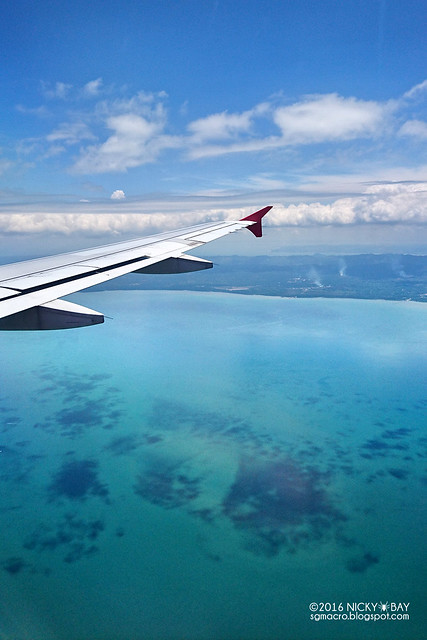
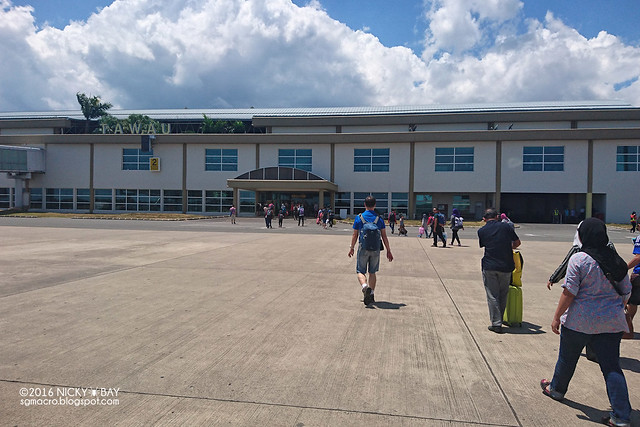
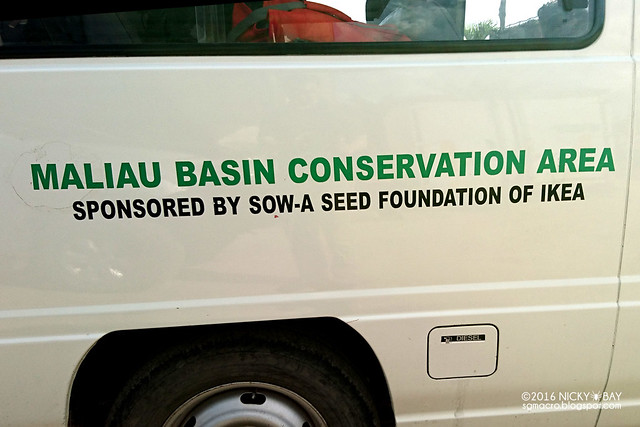


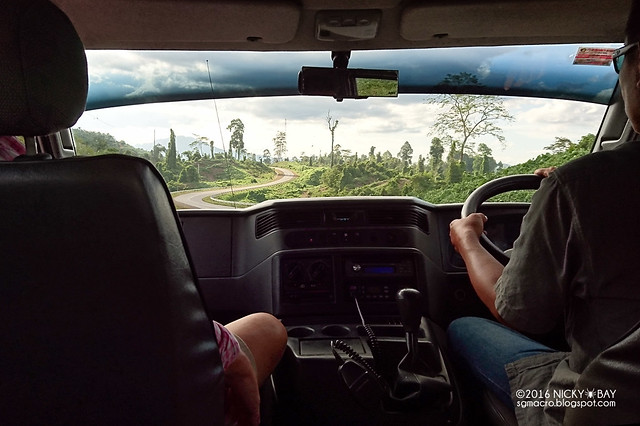
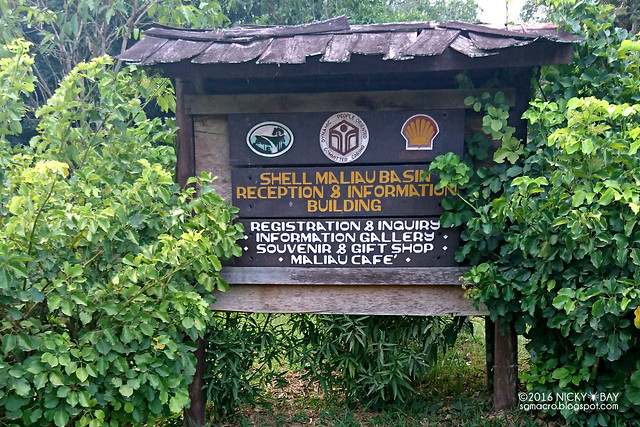

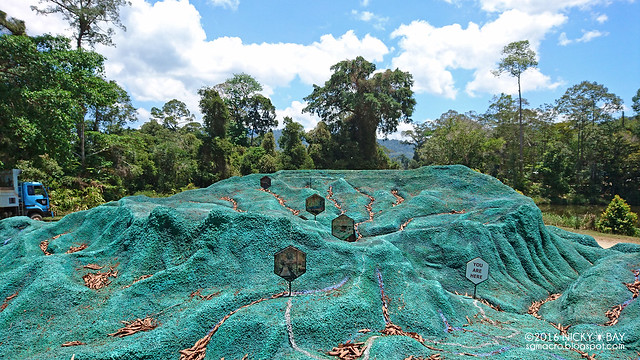
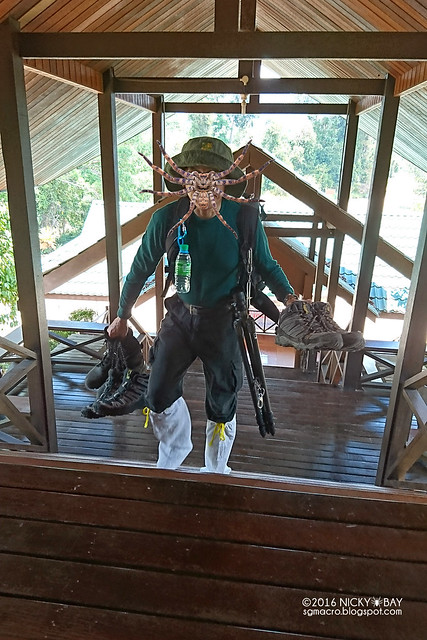
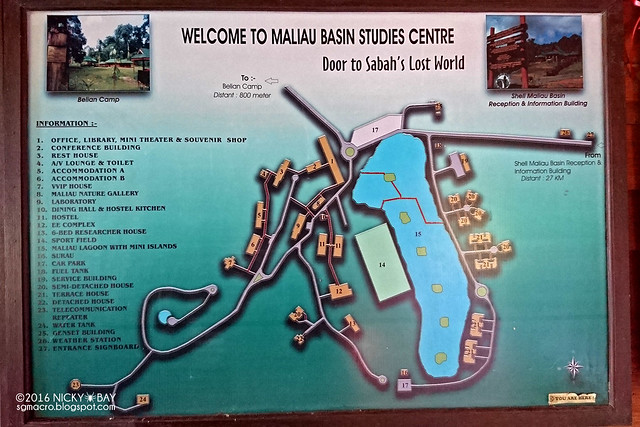
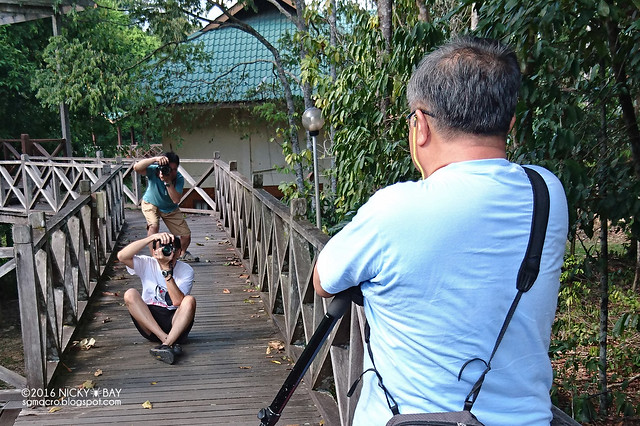
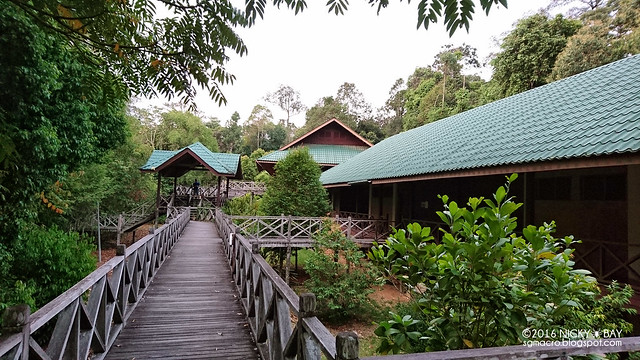
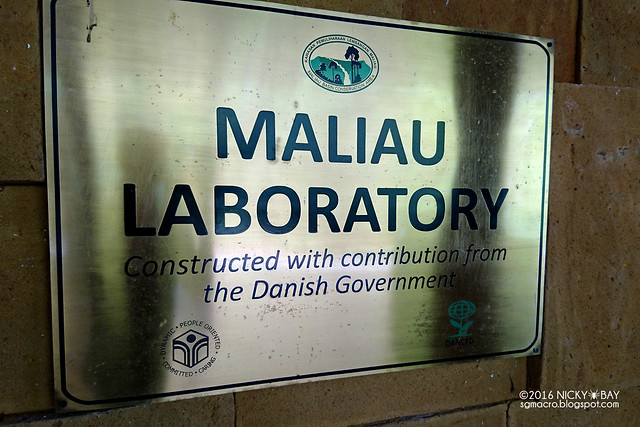

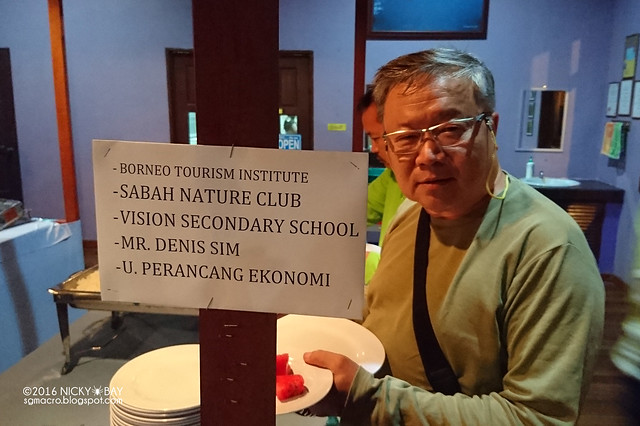

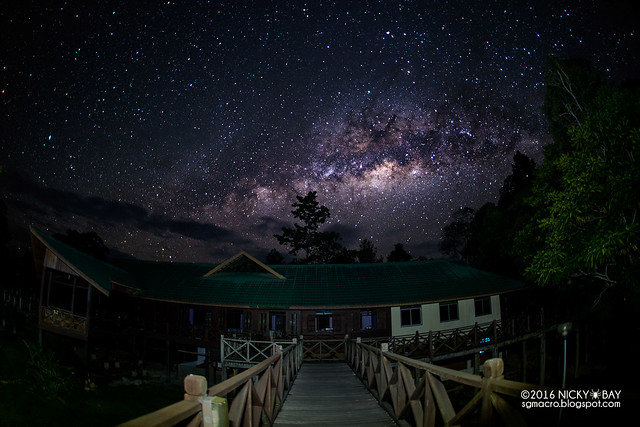
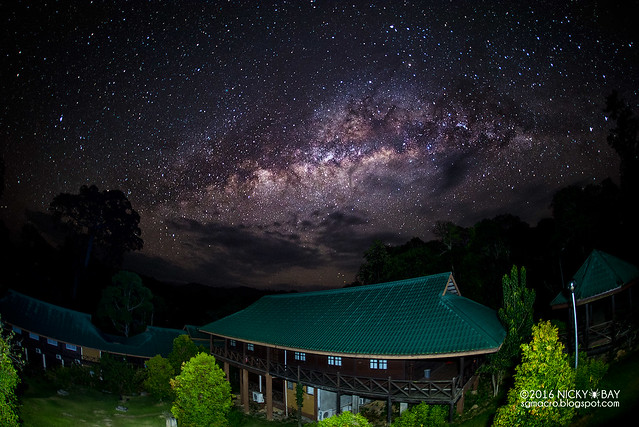

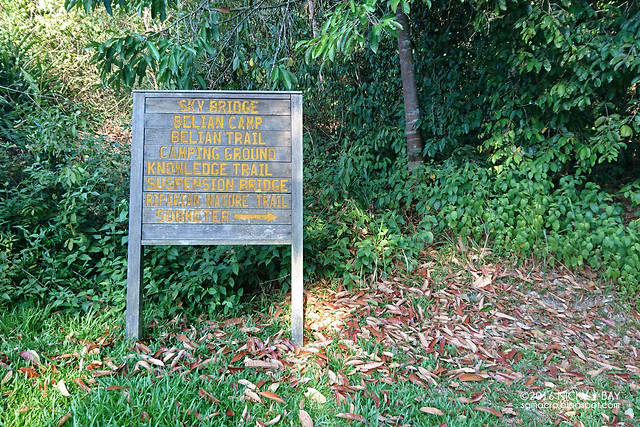
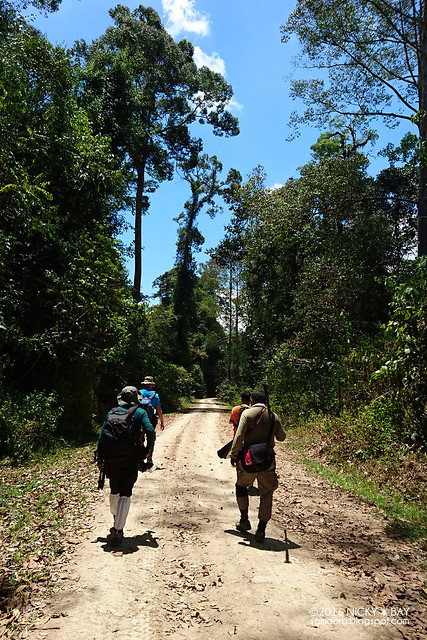
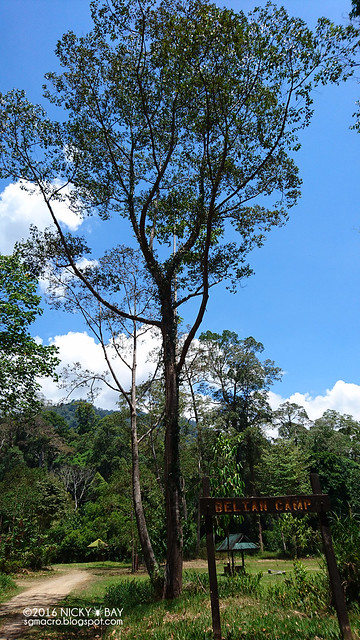
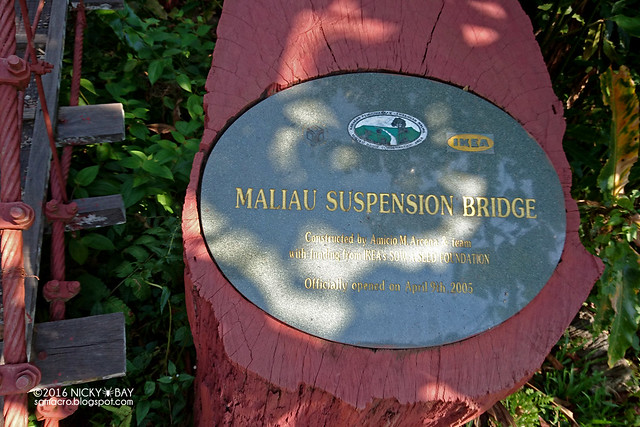
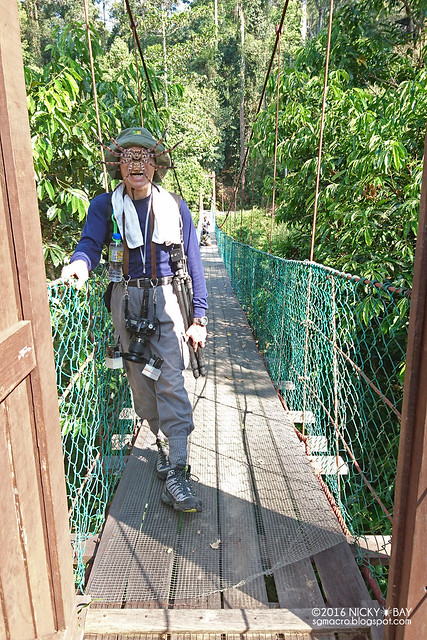
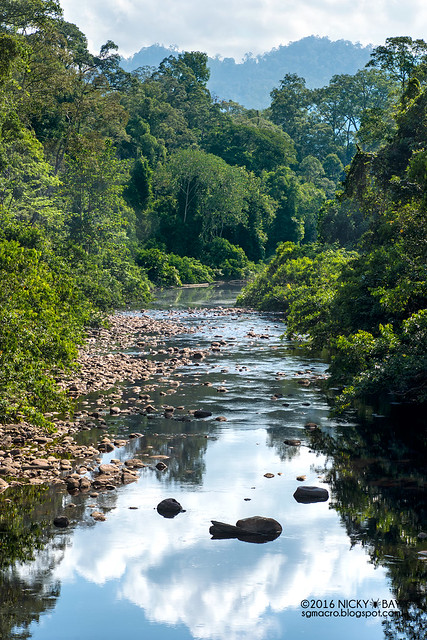
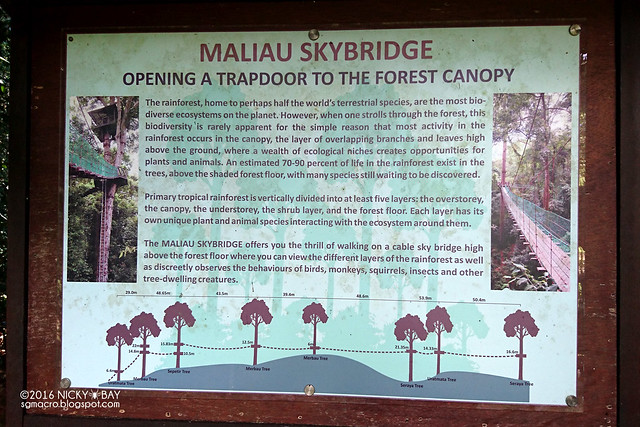
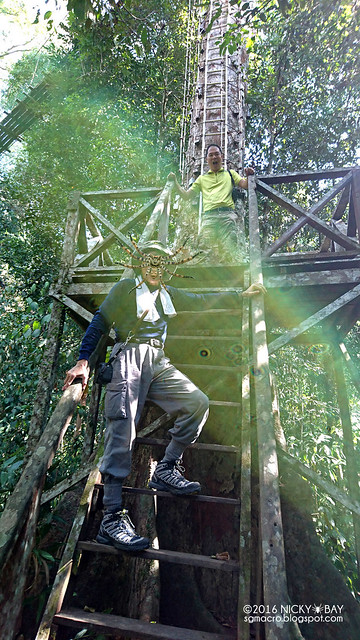
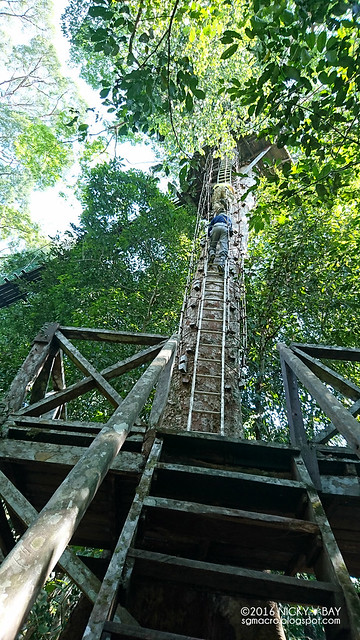
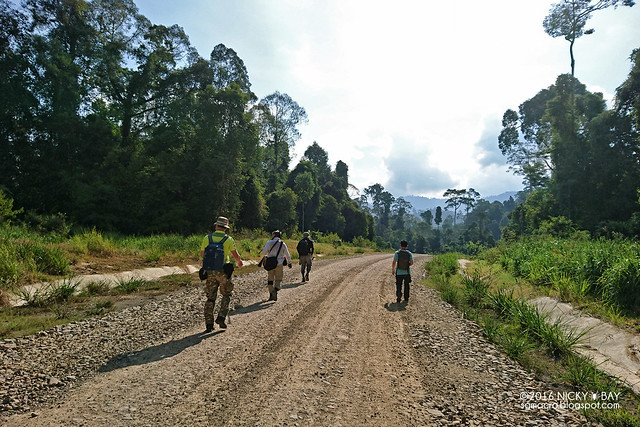
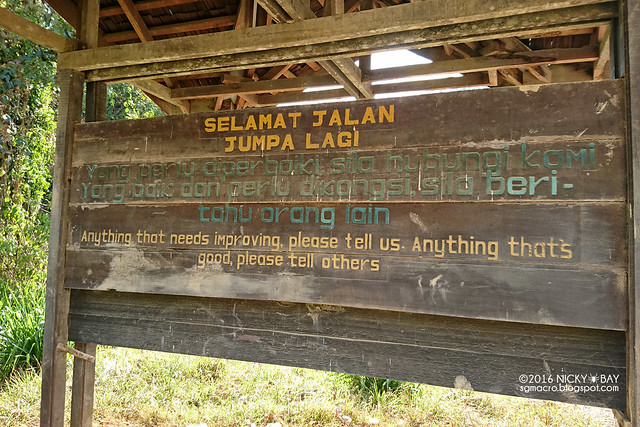
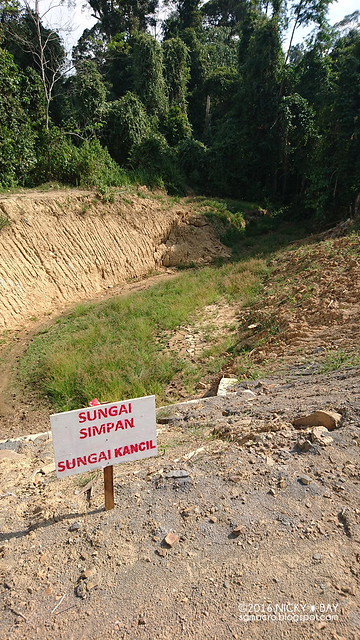
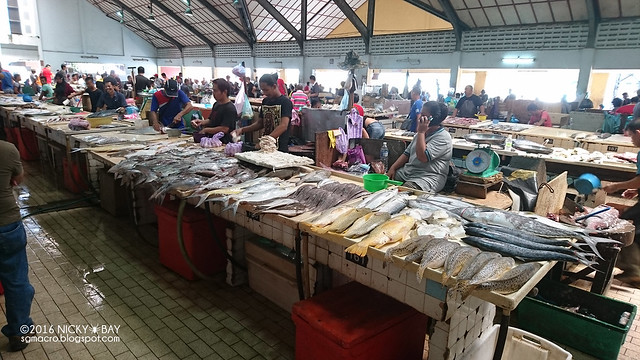
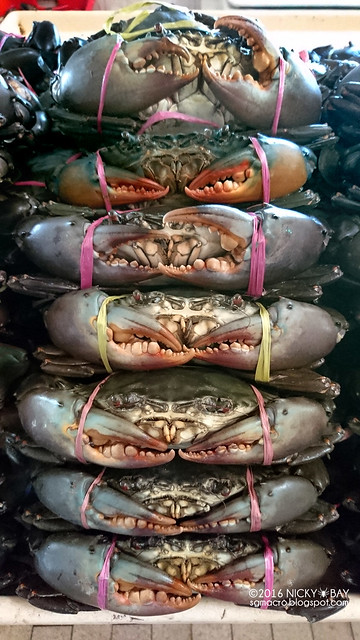
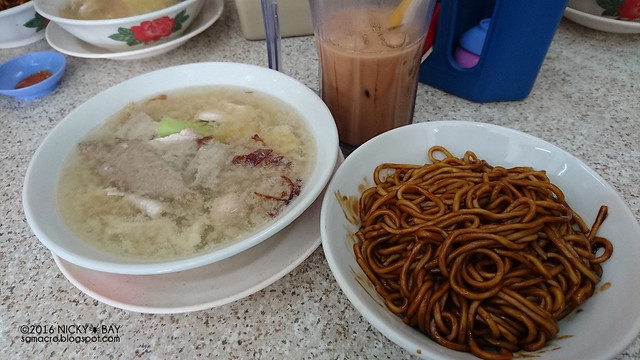
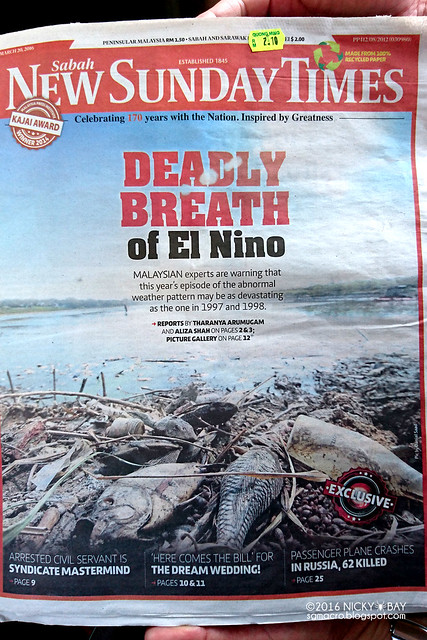
Araneidae: Orb Weaver Spiders
There were surprisingly very few araneids in the trails, possibly due to the drought.


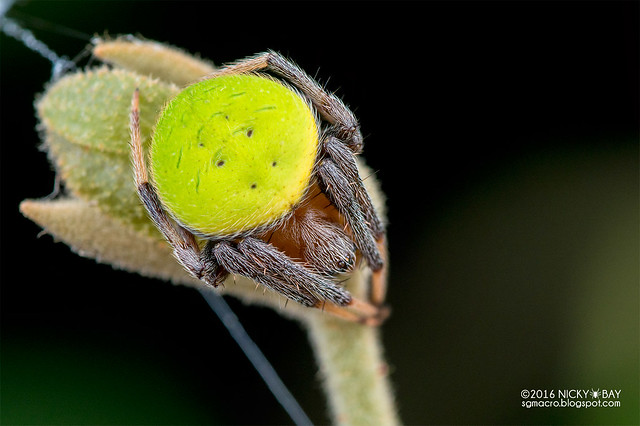
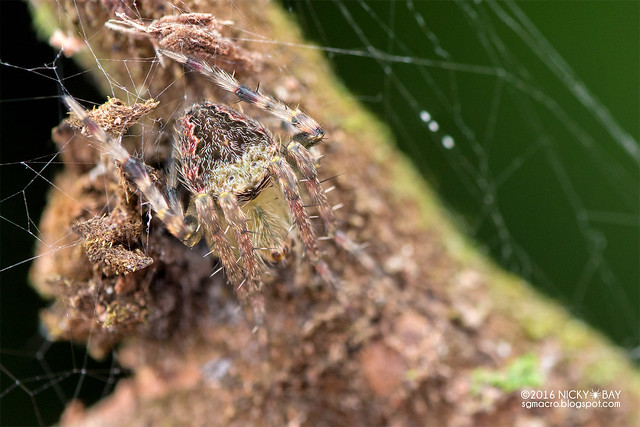
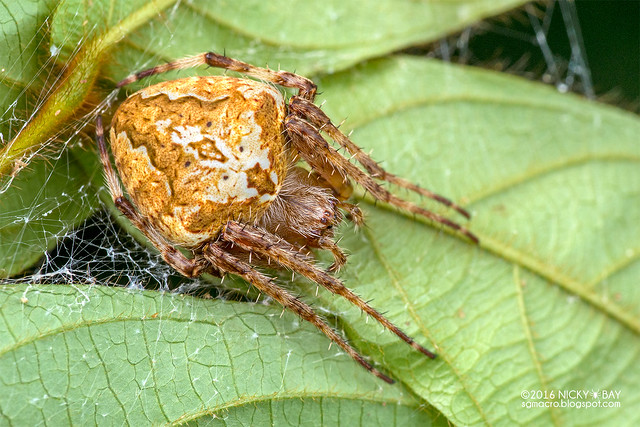
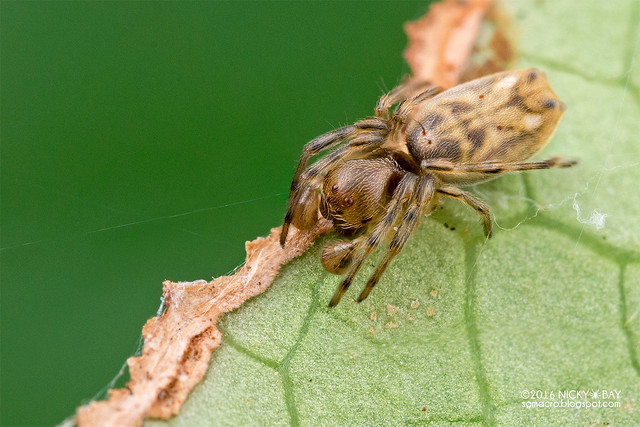
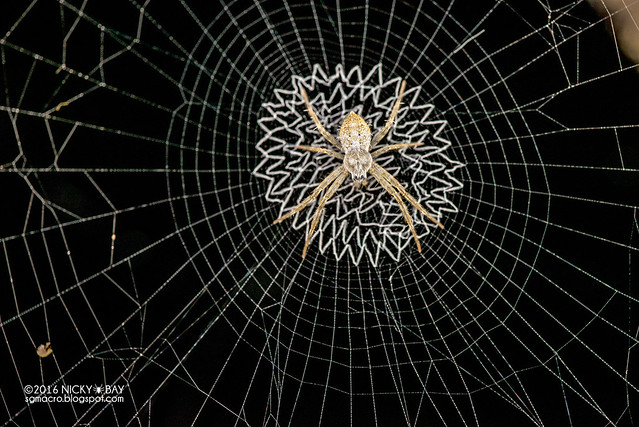
Clubionidae, Eutichuridae: Sac Spiders
We saw numerous sac spiders in the foliage, but most were similar to what we see in Singapore.
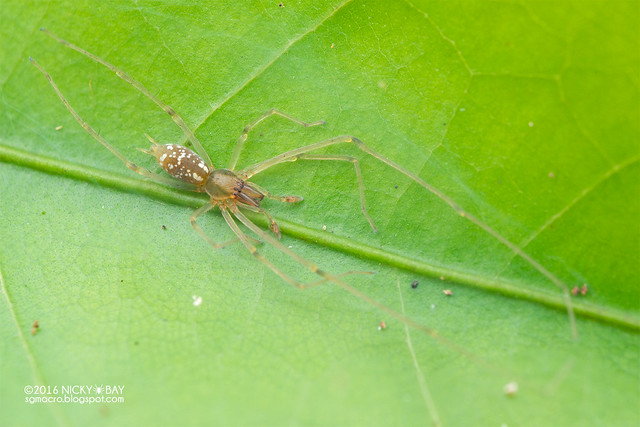

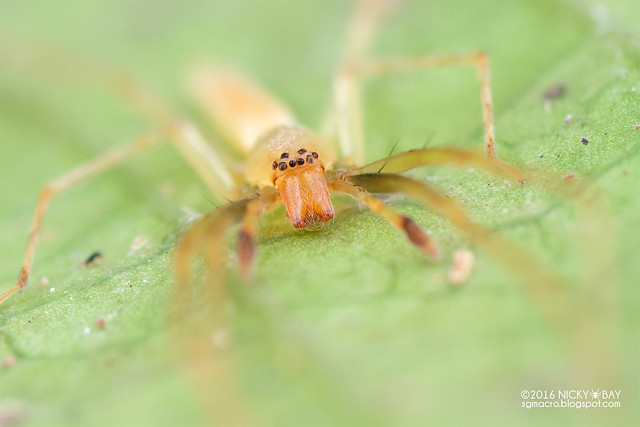
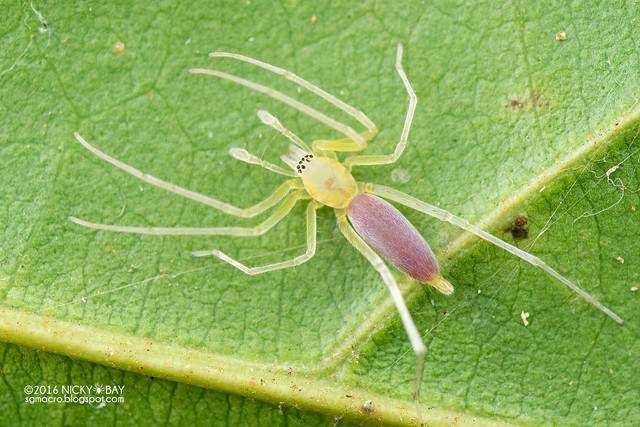

Corinnidae, Liocranidae: Ant-Like Sac Spiders
Spiders in the families Corinnidae and Liocranidae are often overlooked. Many are ant-like and can move at fast speeds.

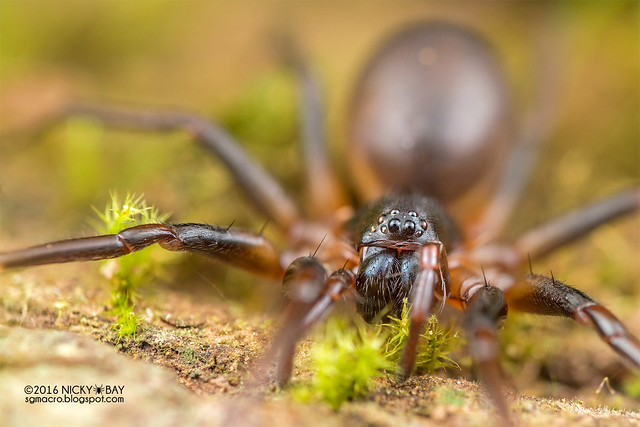
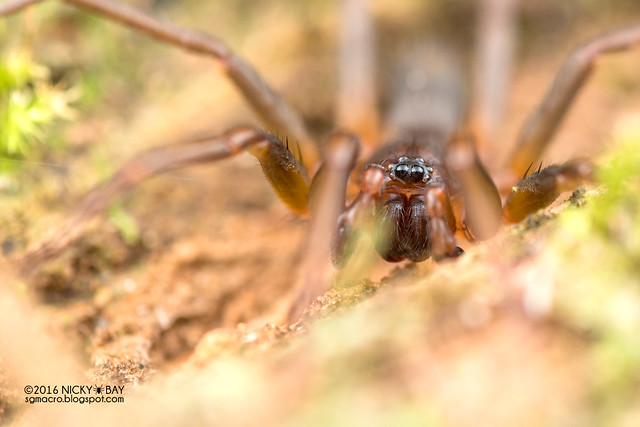
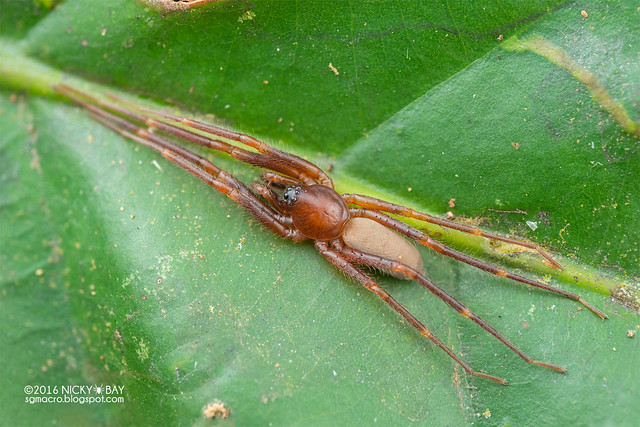
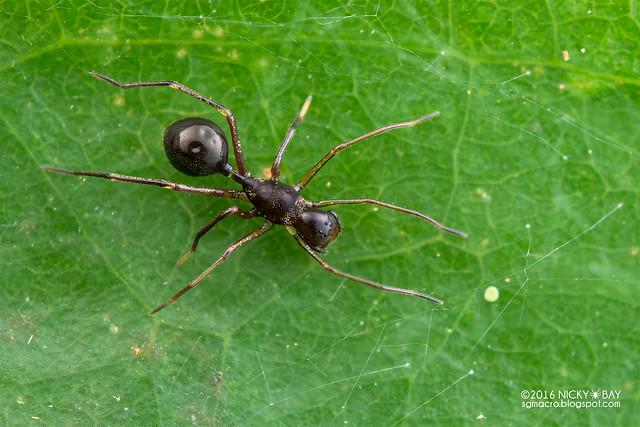
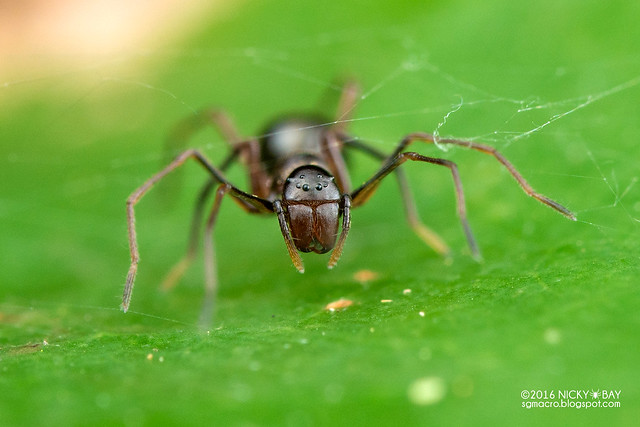

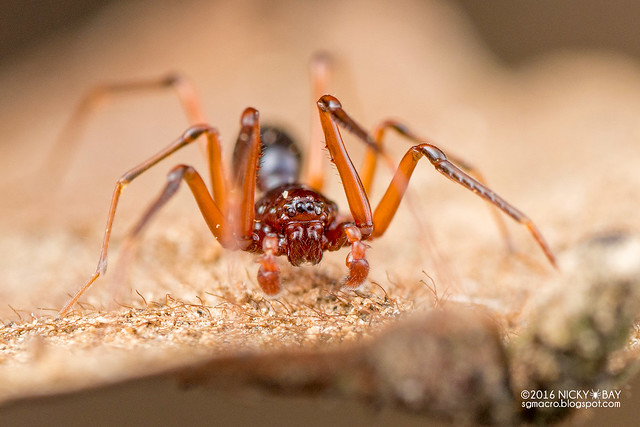
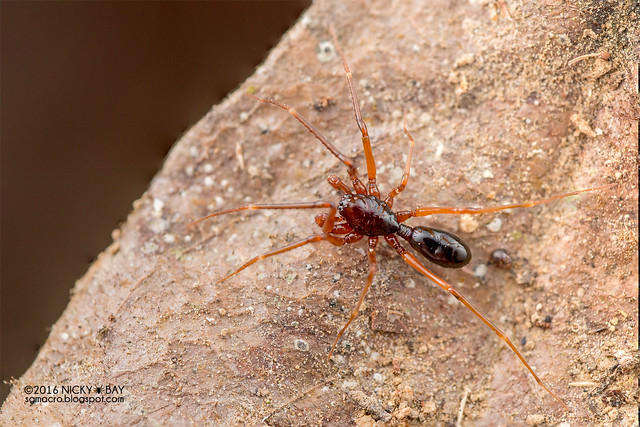
Ctenidae: Wandering Spiders
We saw a couple of ctenids on the forest floor that looked like what we commonly see in Singapore, but there were quite a number of large Acantheis on the tree trunks which could be mistaken for sparassids.
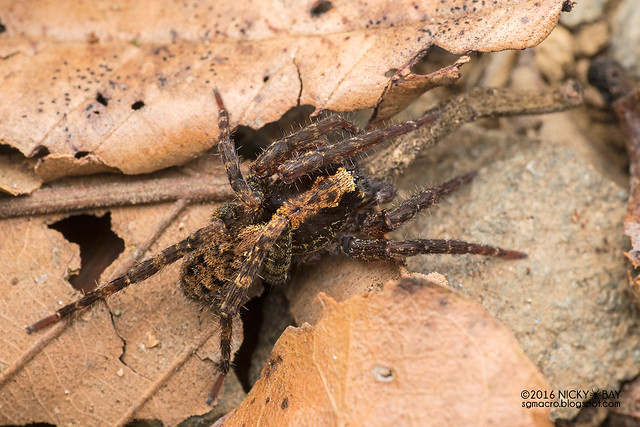
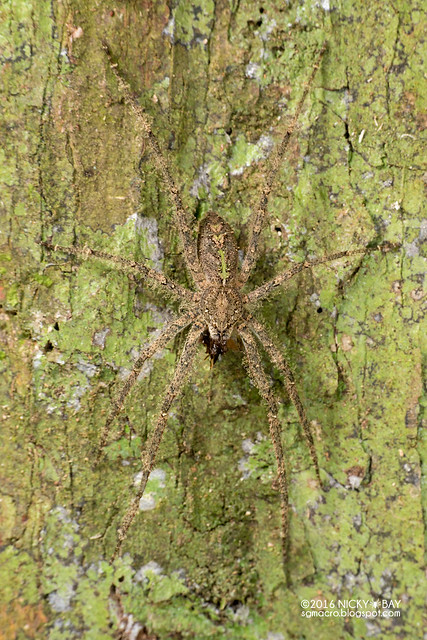

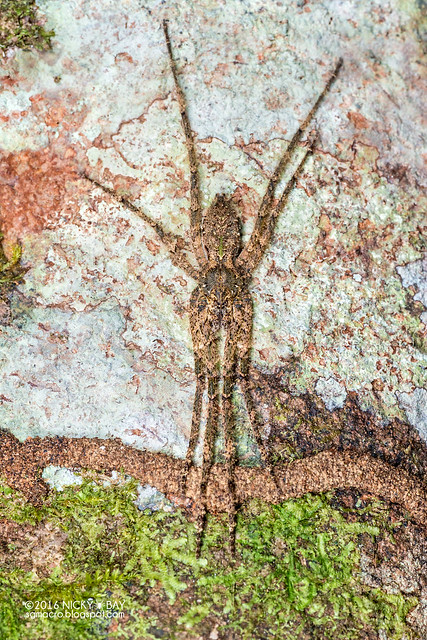
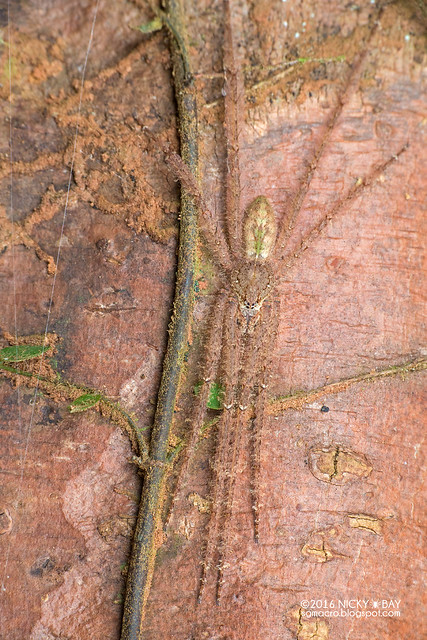
Hersiliidae: Two-Tailed Spiders
These spiders were very common on the tree trunks with little species variation, but most were really good at camouflage!
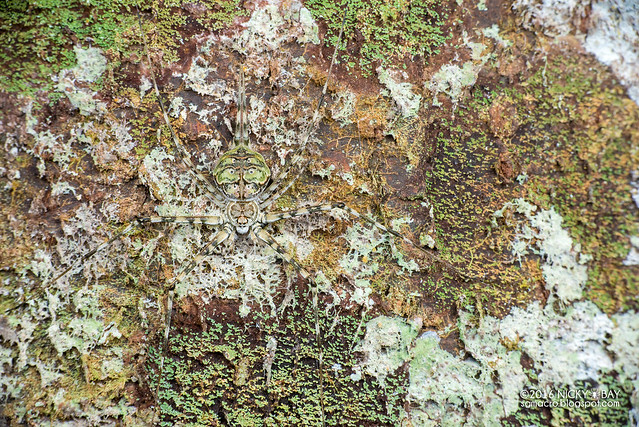
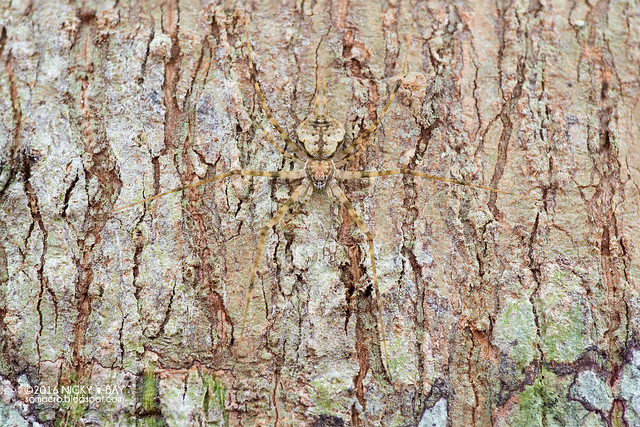
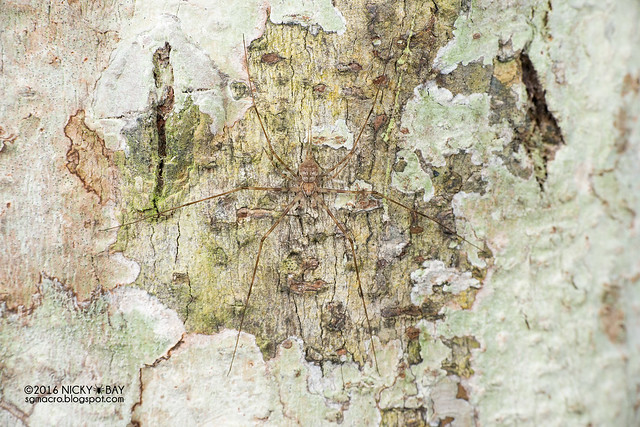
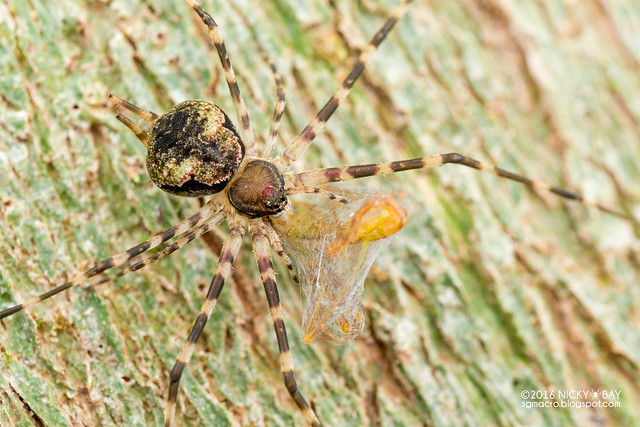
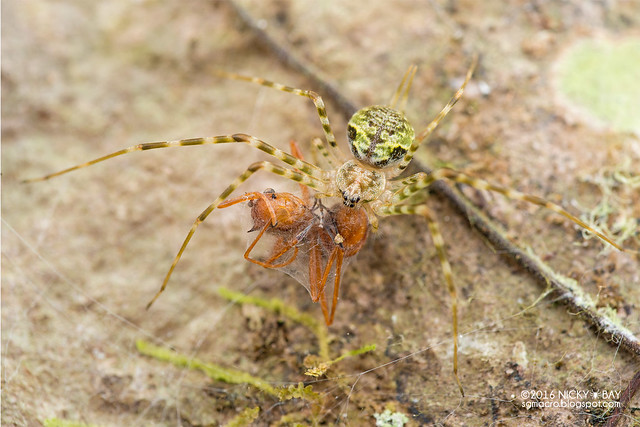
Oxyopidae: Lynx Spiders
There were healthy populations of Hamadruas and some Hamataliwa, but there wasn’t as much variety as expected.
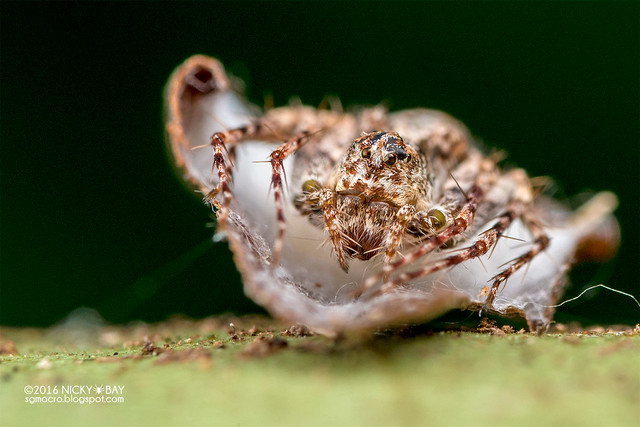
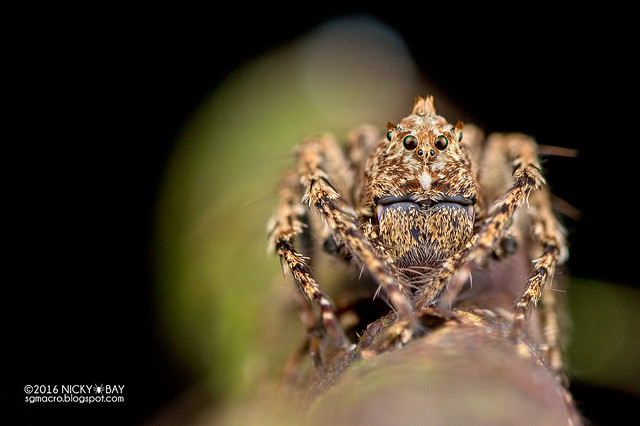
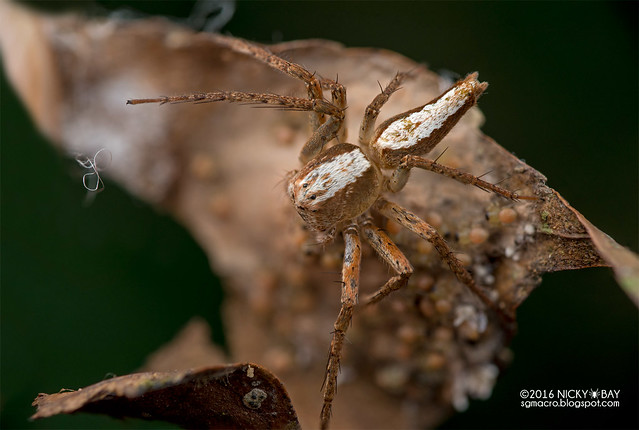
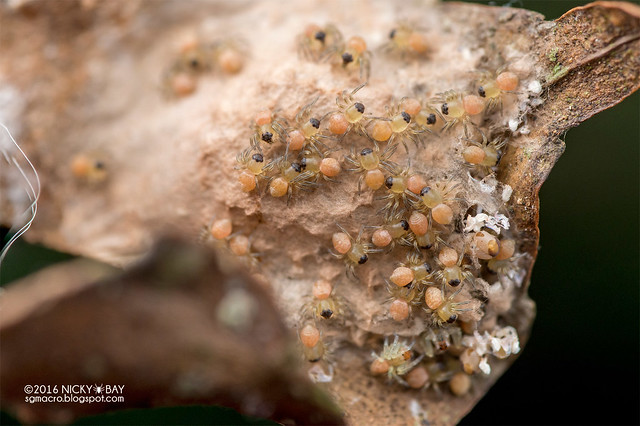
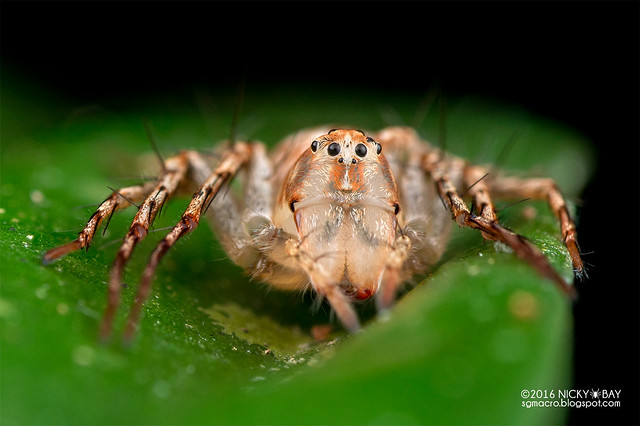
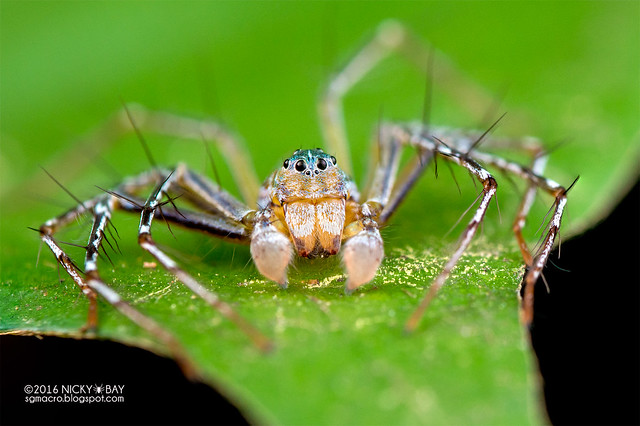
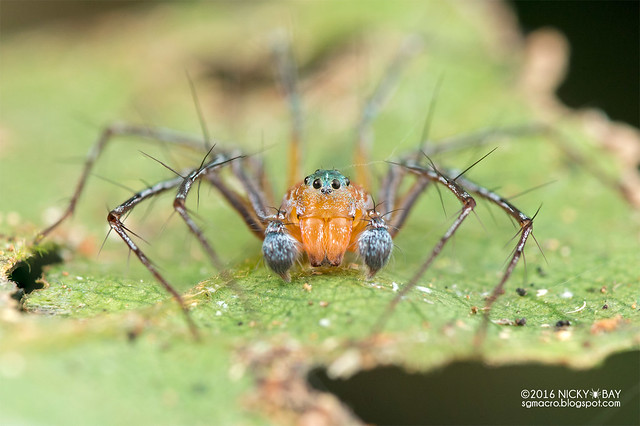
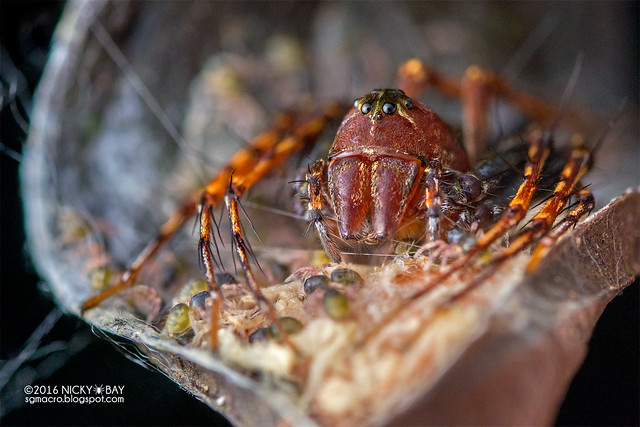
Pholcidae: Daddy-Long-Legs Spiders
We saw numerous pholcids in this trip, but most were dull looking or common, so I only have a small number of photos to share here.
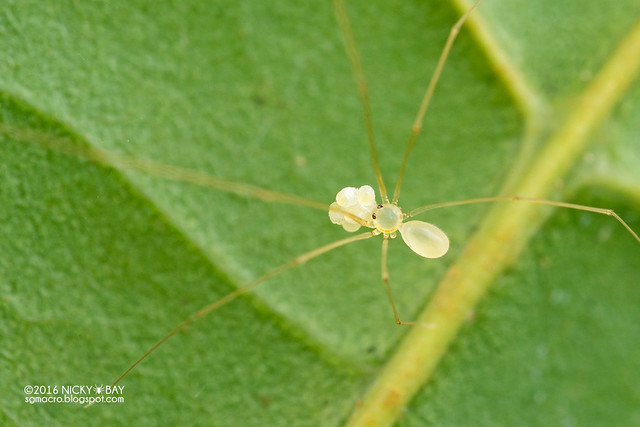
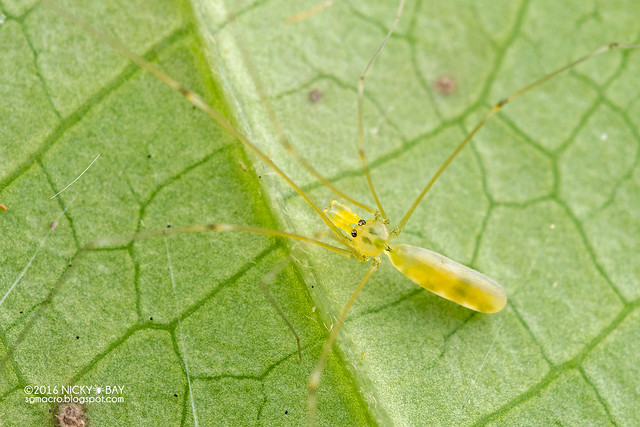
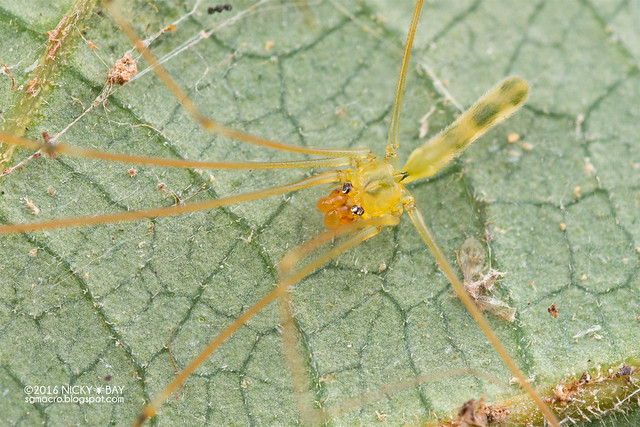
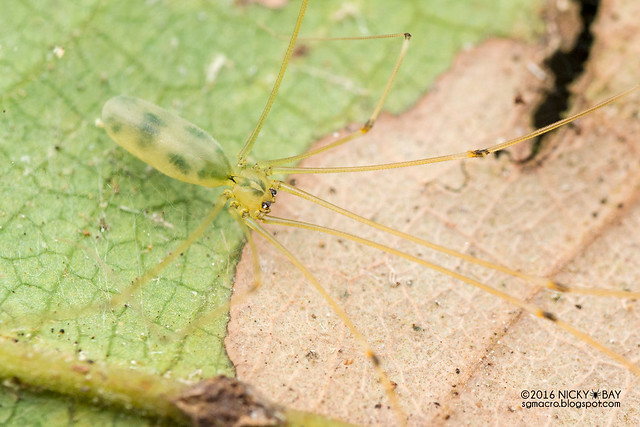
Pisauridae: Nursery Web Spiders
There were a couple of nursery web spiders along the trails, although most were juvenile with a few exceptions.
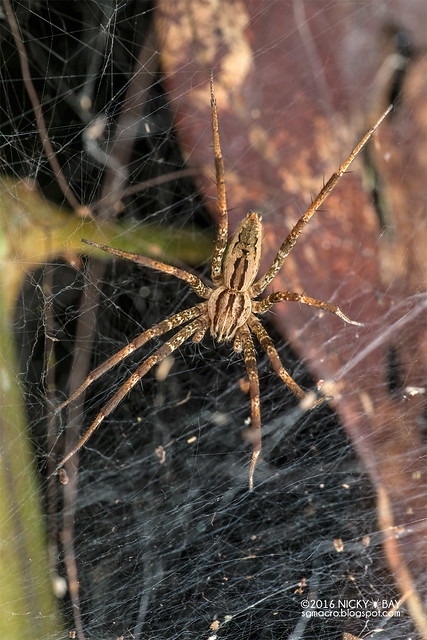
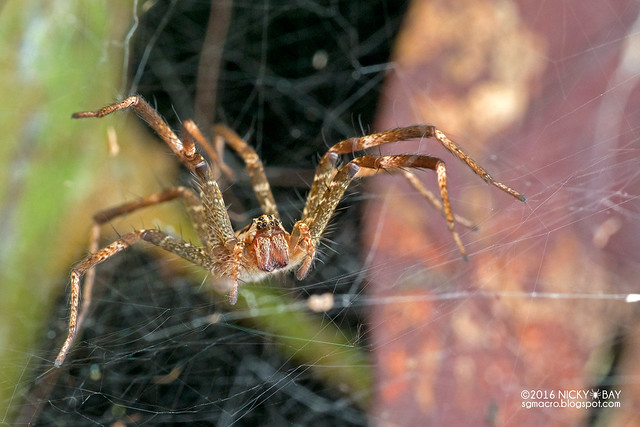
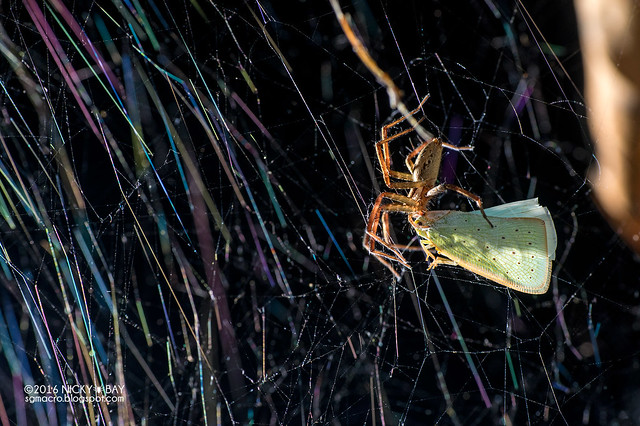
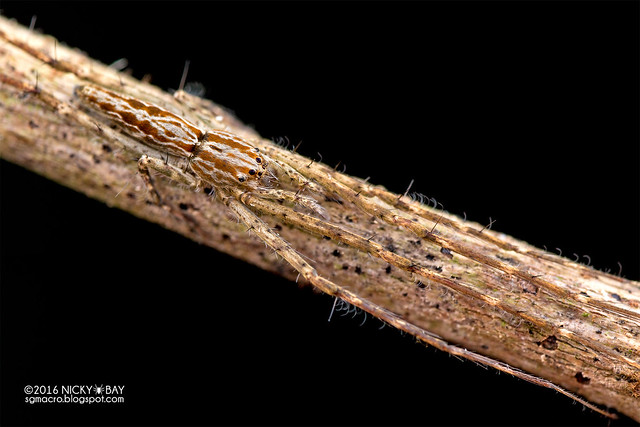
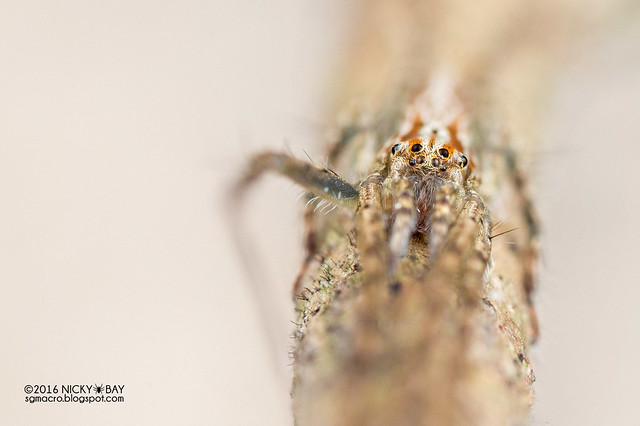
Salticidae: Jumping Spiders
There were lots of jumping spiders, but most were from the same genera with not much variety. I’m no good with identifying them so most will just remain as Salticidae. 🙂

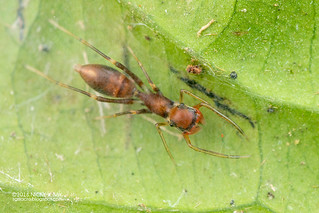 |
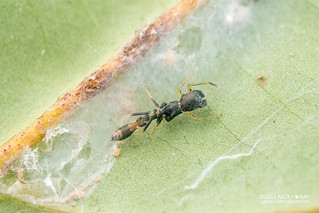 |
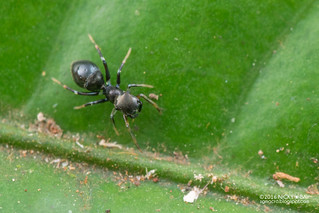 |
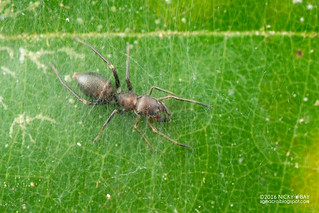 |

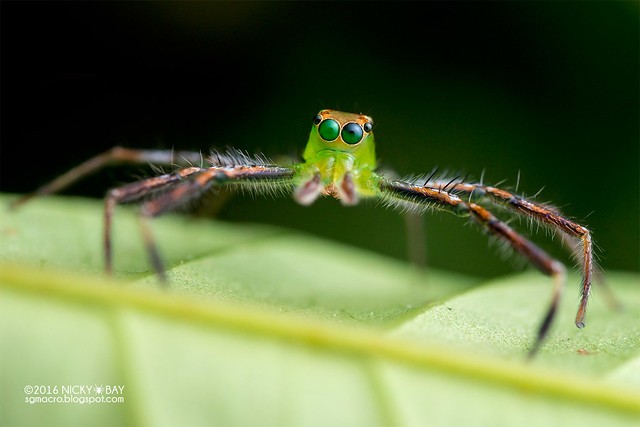
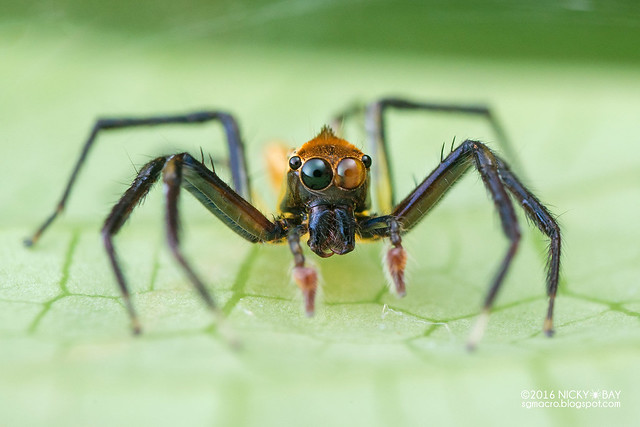
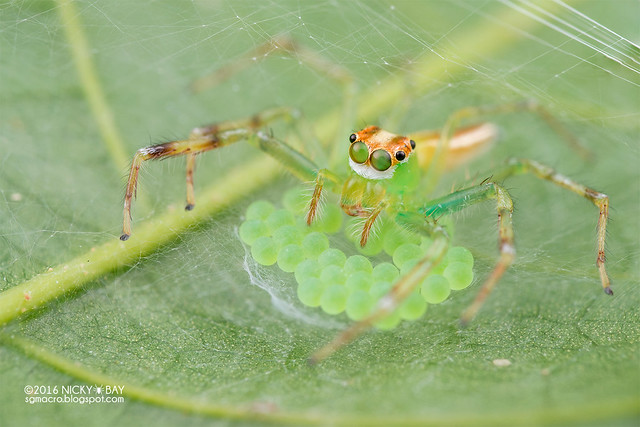
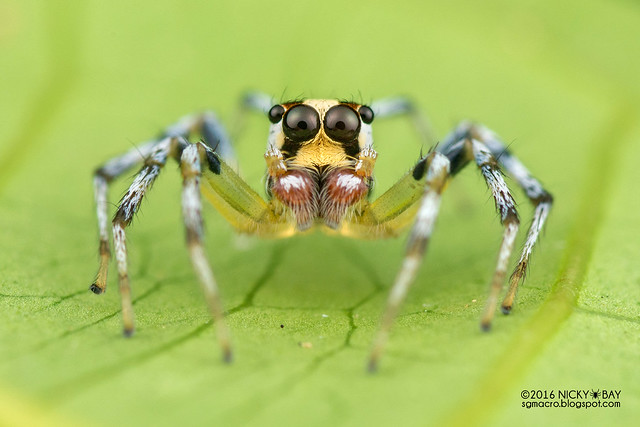
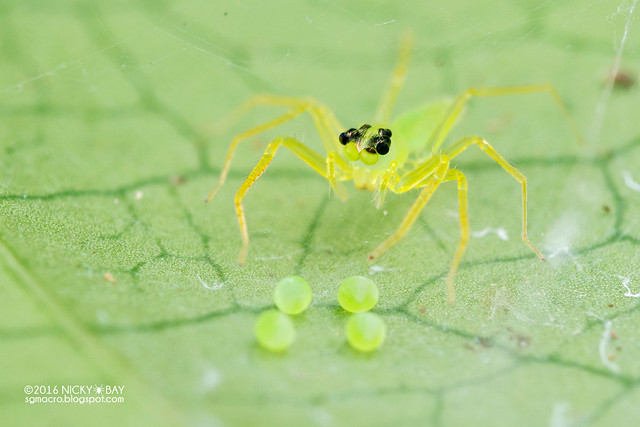
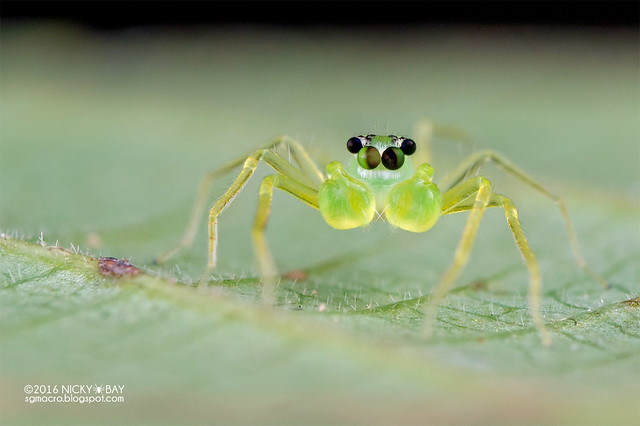
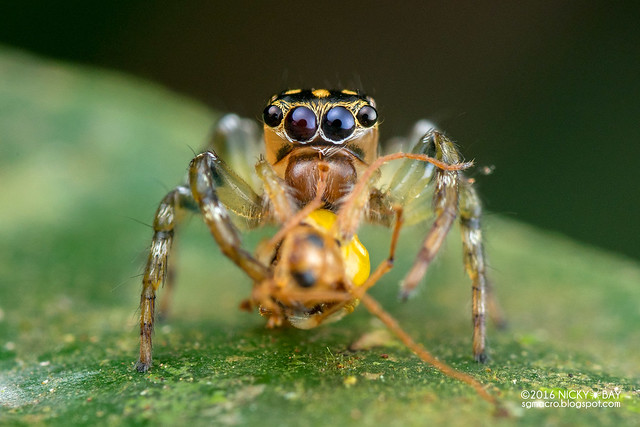
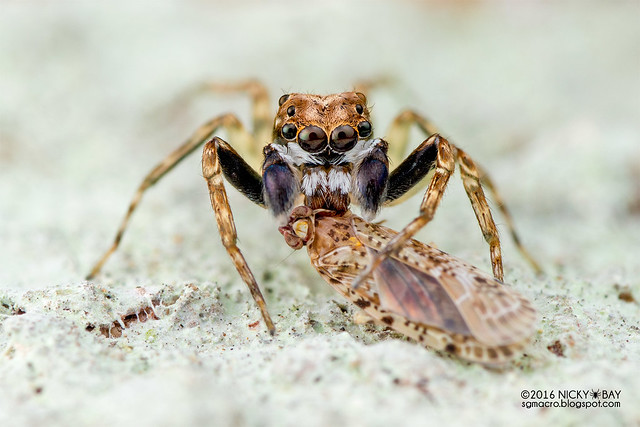
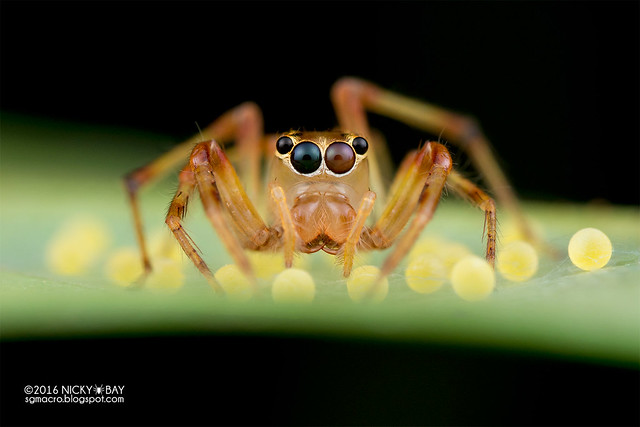
Sparassidae: Huntsman Spiders
We saw many sparassids on the forest floor, tree trunks and in the foliage every night. Just a couple of interesting ones.
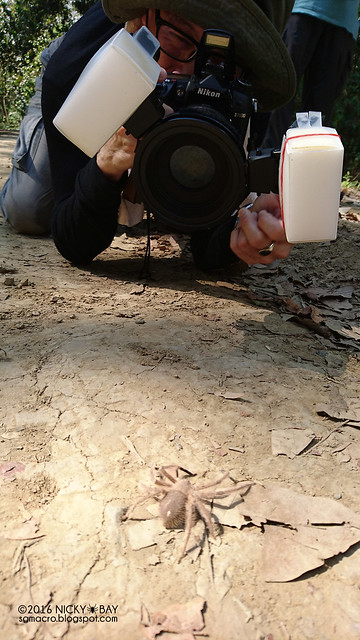
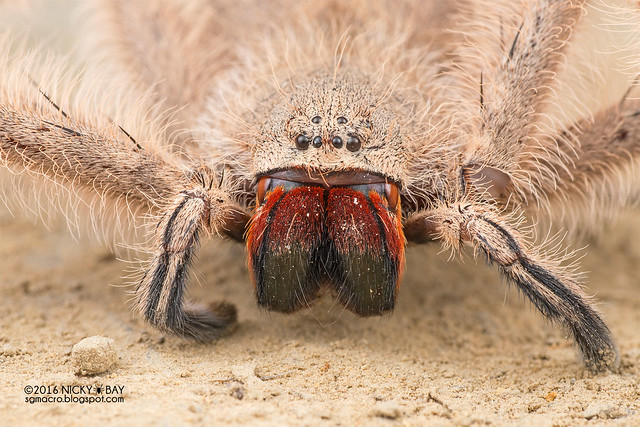

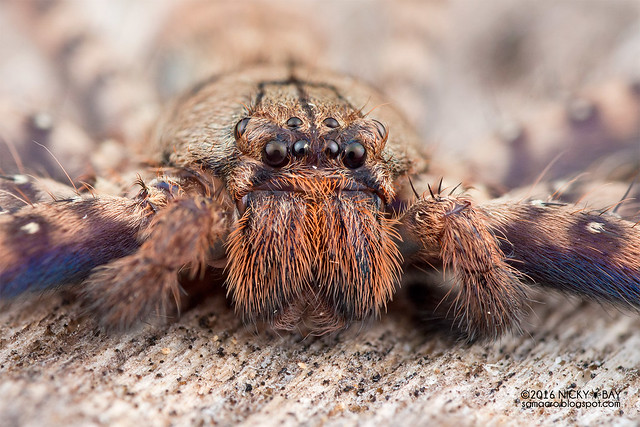
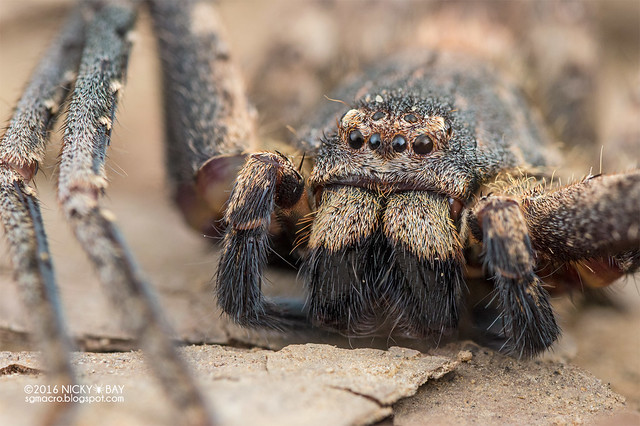
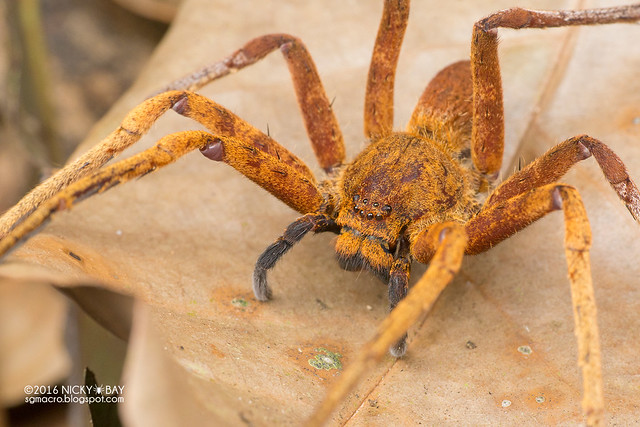

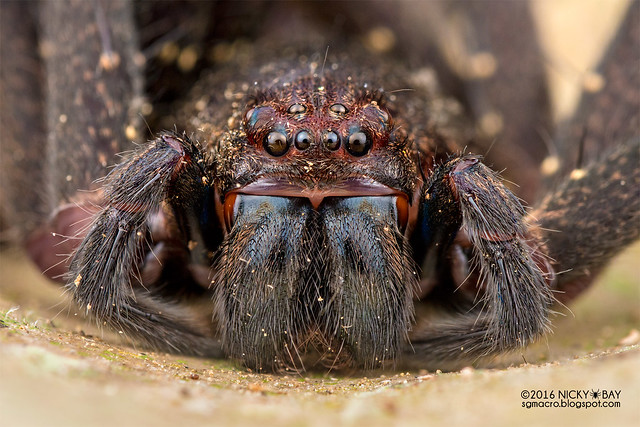
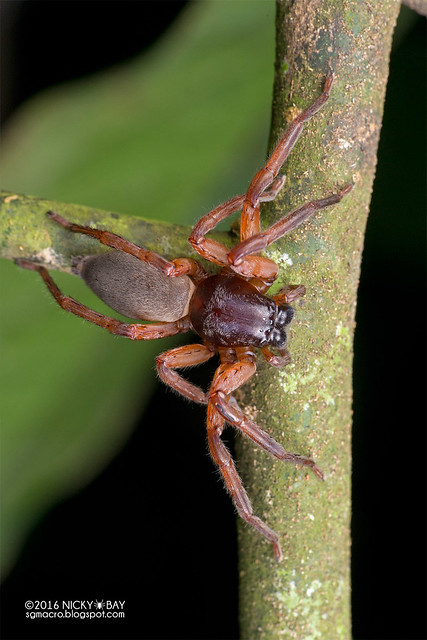
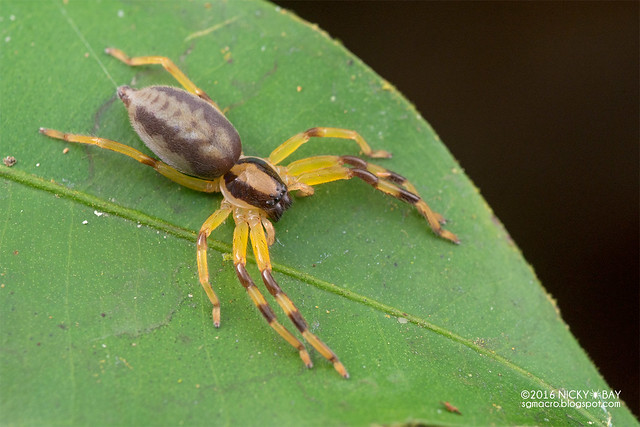
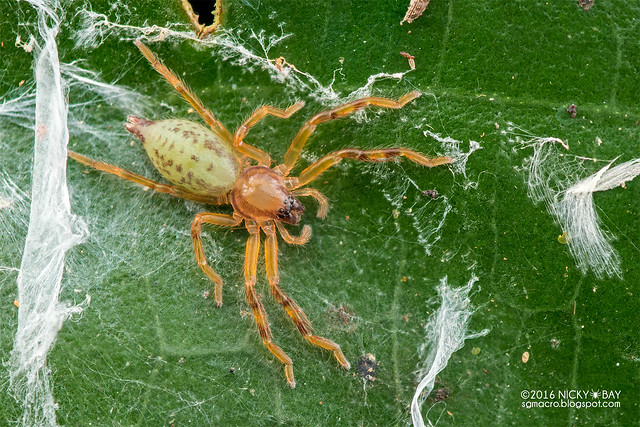
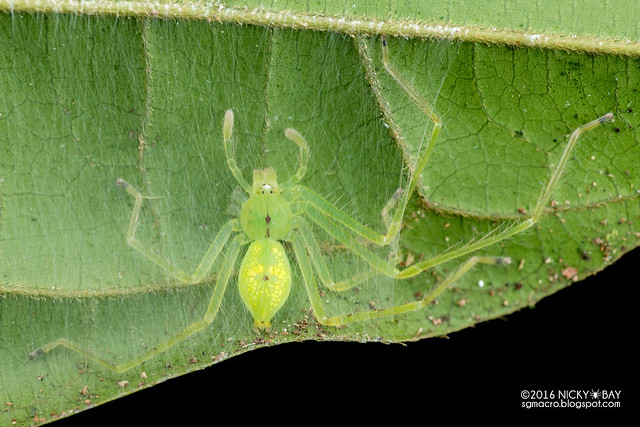
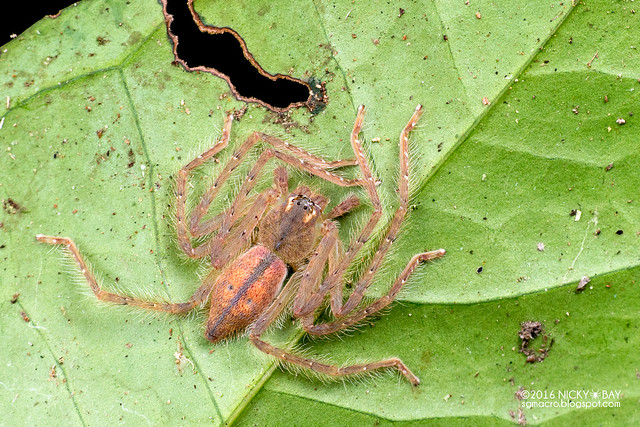
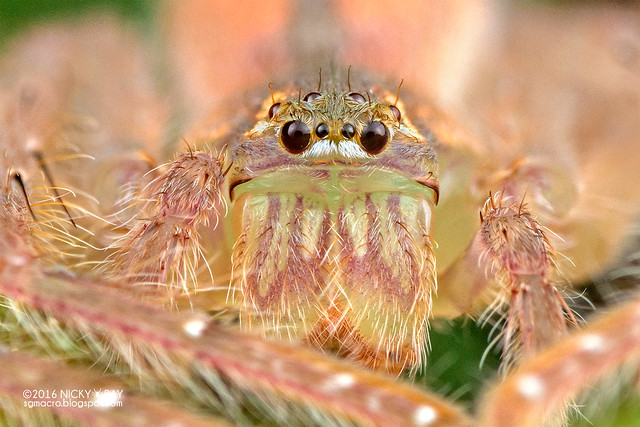

Theridiidae: Comb-Footed Spiders
It was odd that I didn’t see any theridiids at all on the first two days, but they started appearing on the third.
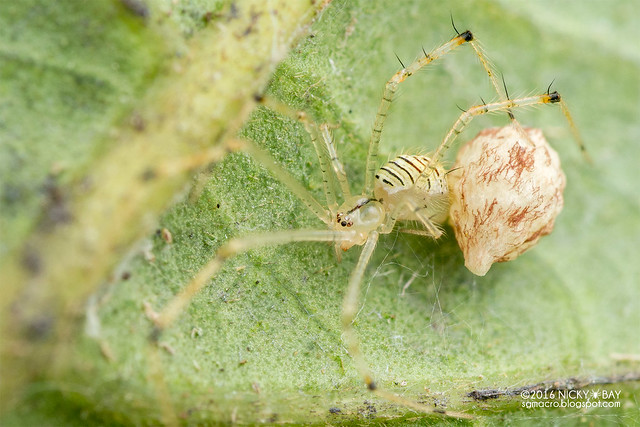
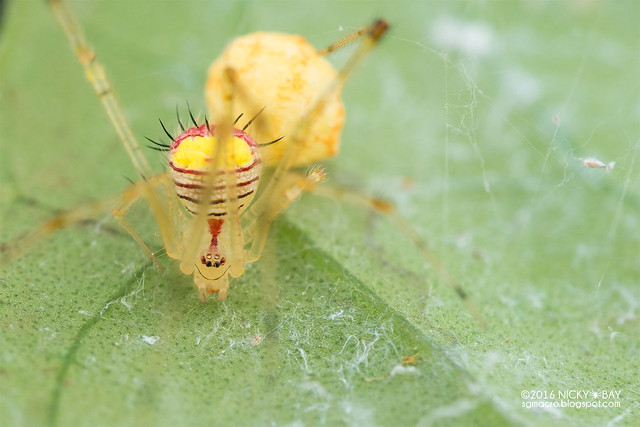
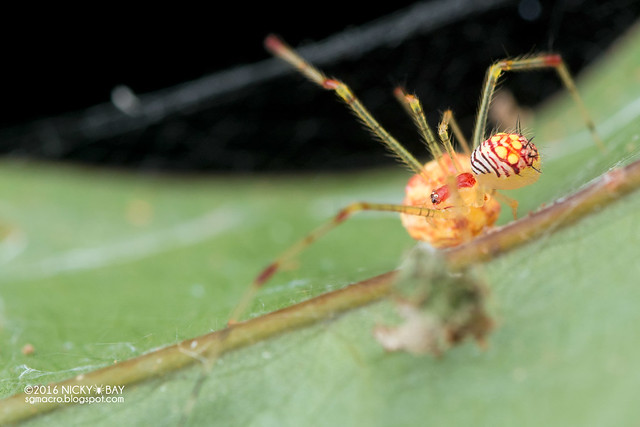


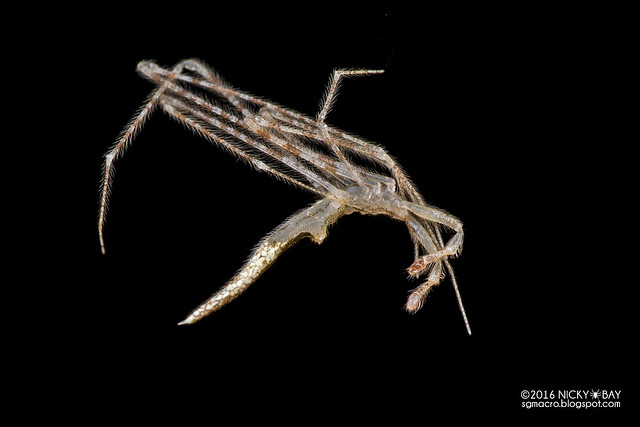
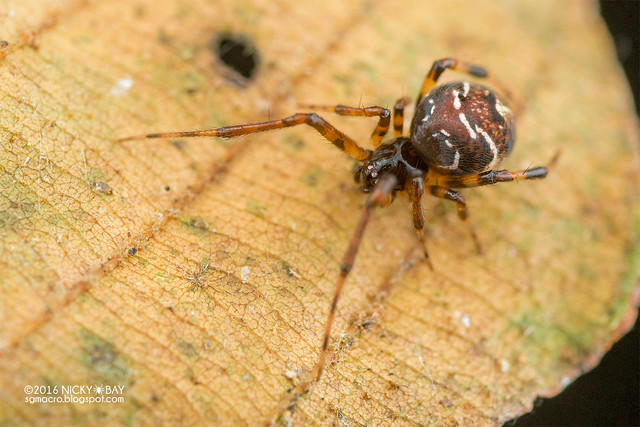
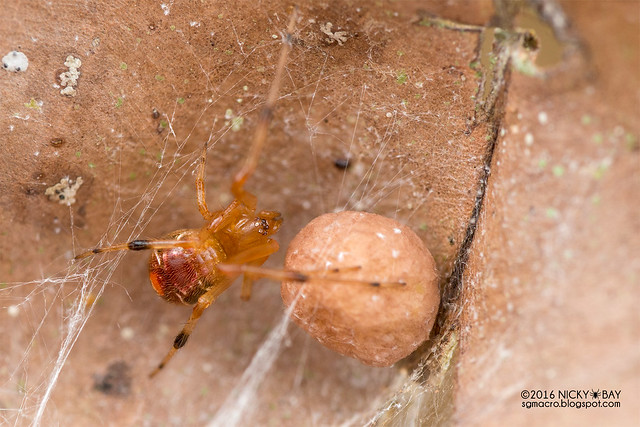
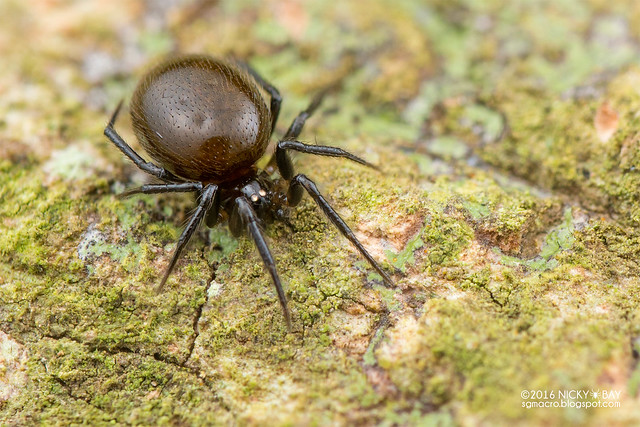
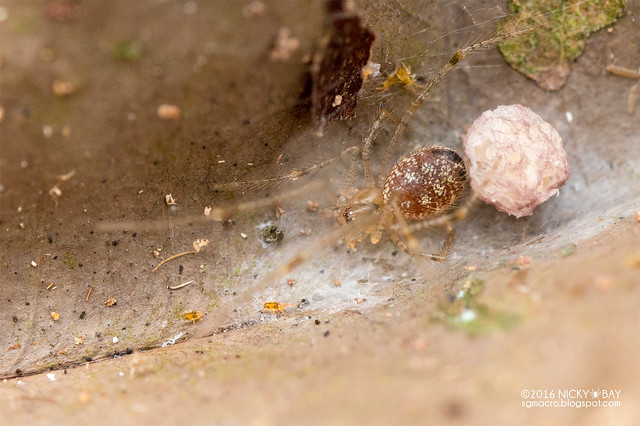
Thomisidae: Crab Spiders
There were very few thomisids on the foliage with only a few sightings. Nevertheless, I have a new genus in my photo collection!
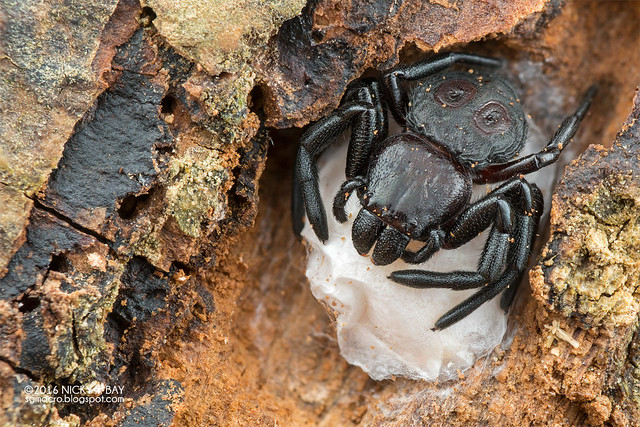
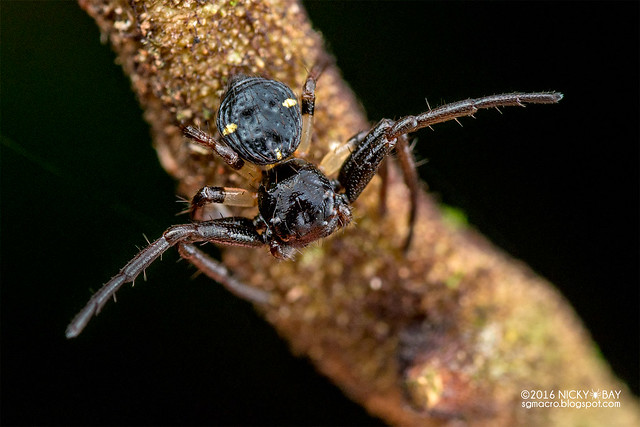
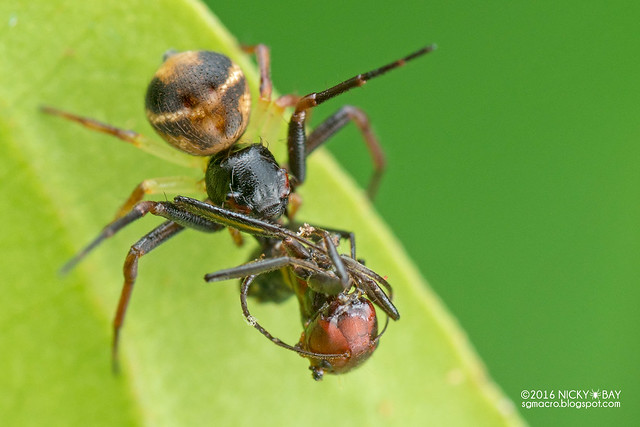
Other Spiders
This section contains the other spiders belonging to smaller families that we encountered.
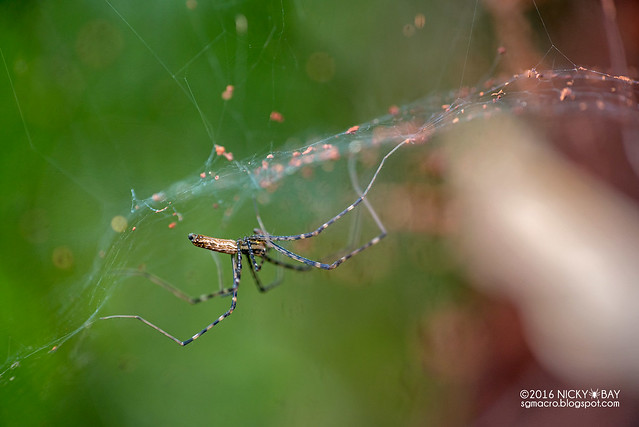
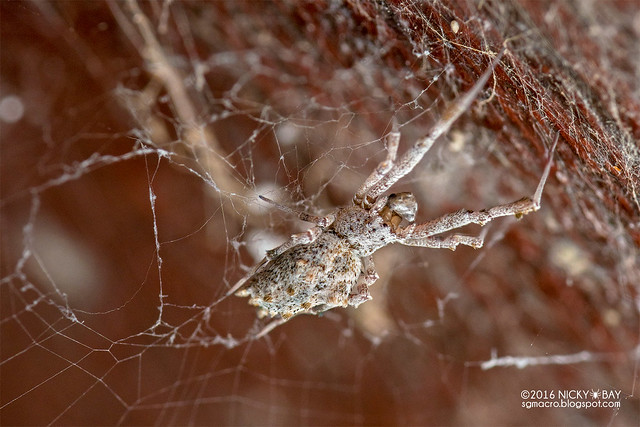
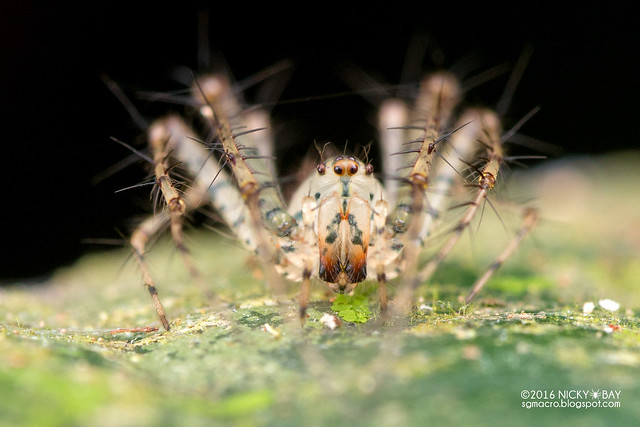
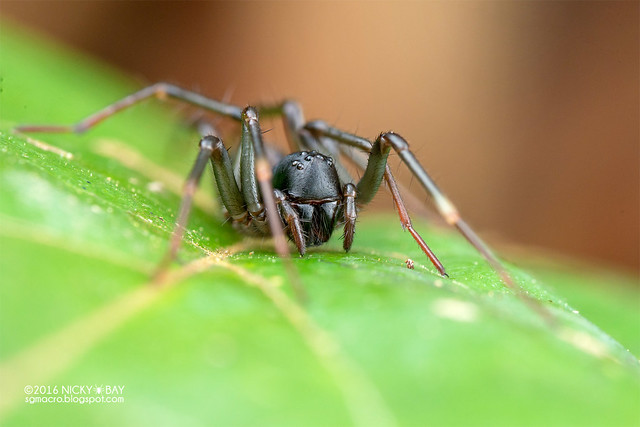
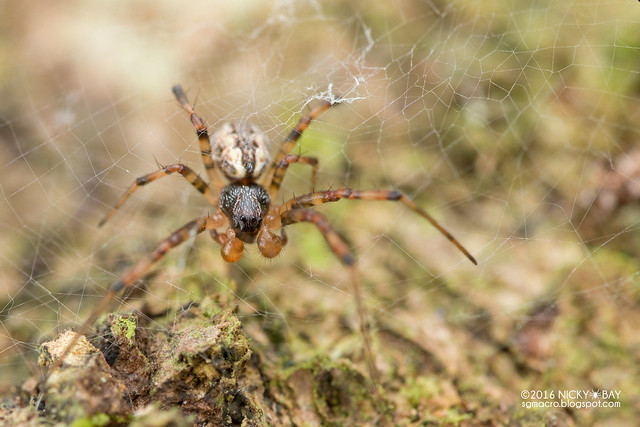

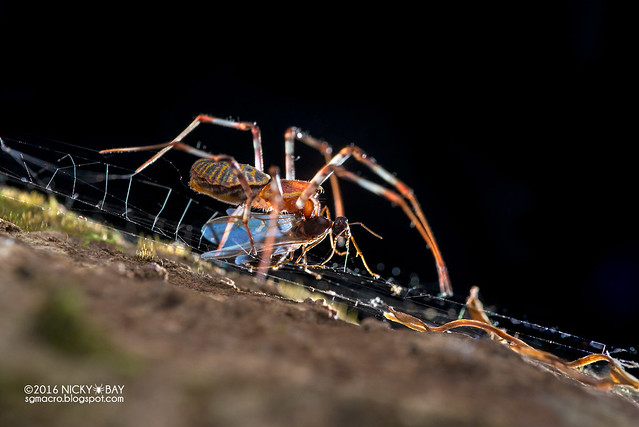
Arachnida: Ticks, Mites, Harvestmen
This section contains arachnids other than spiders.
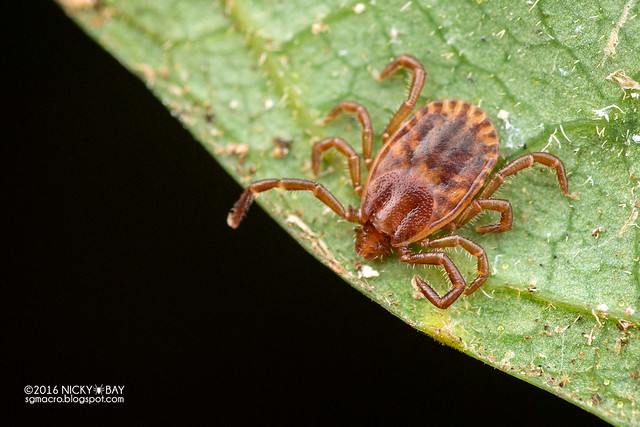
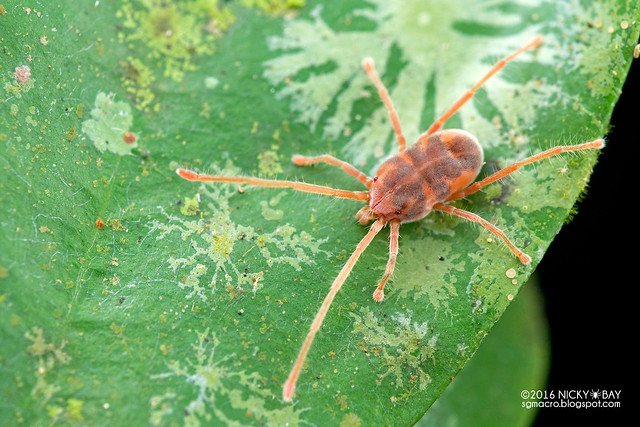

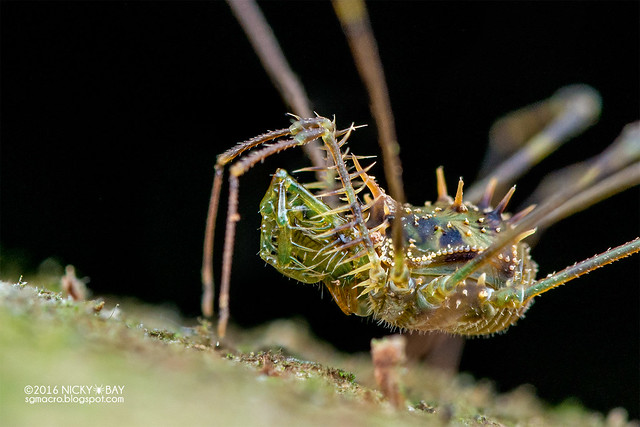
Hymenoptera: Bees, Wasps, Ants
I don’t usually photograph ants as they’re usually running about, but I did find some that were willing to stay still for a bit for some shots.

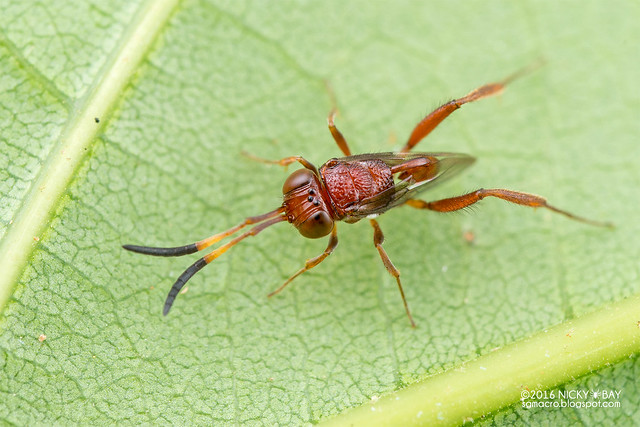
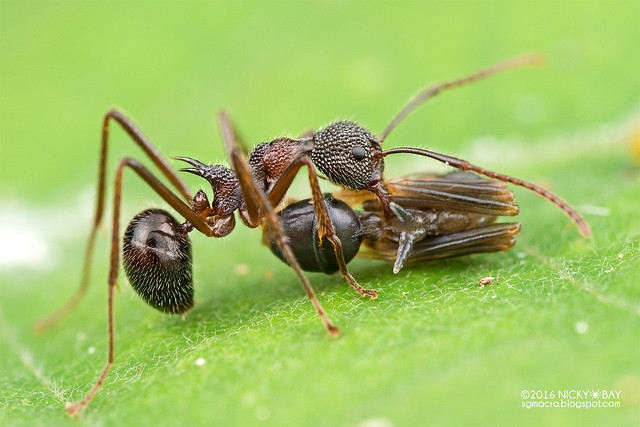
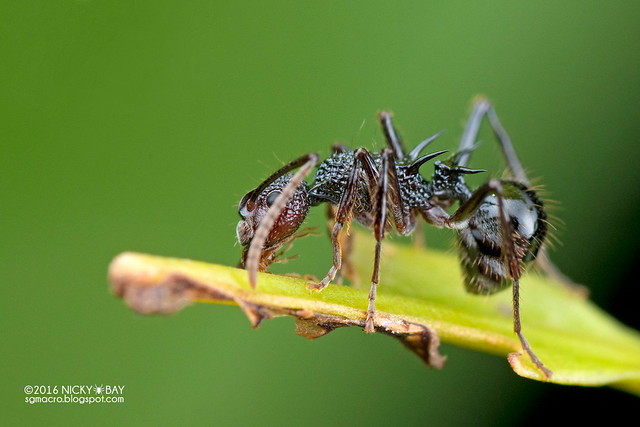
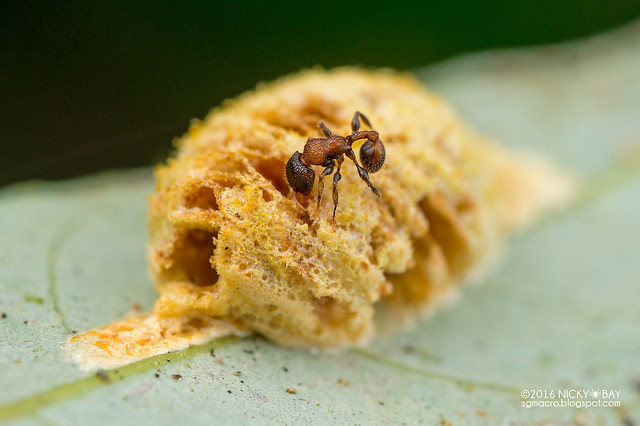
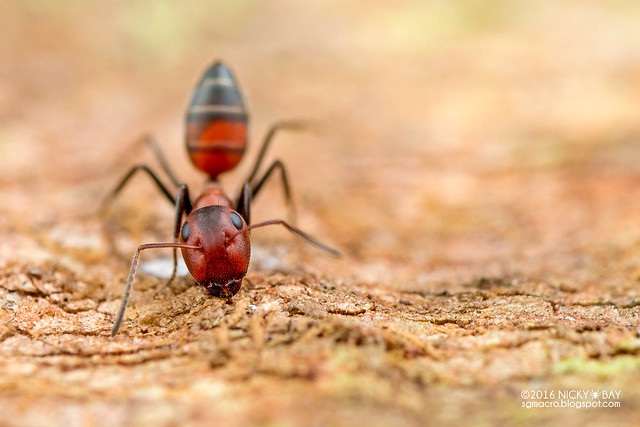

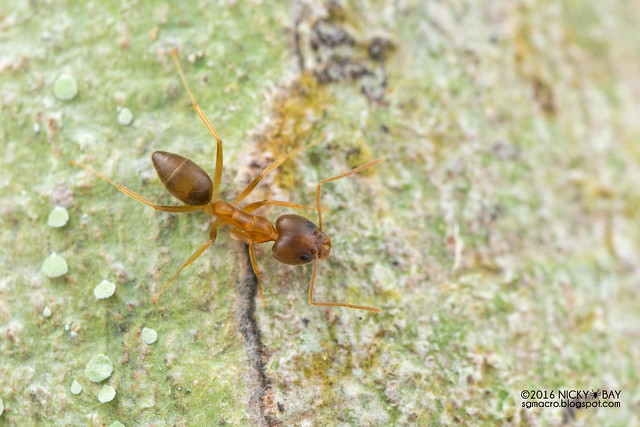
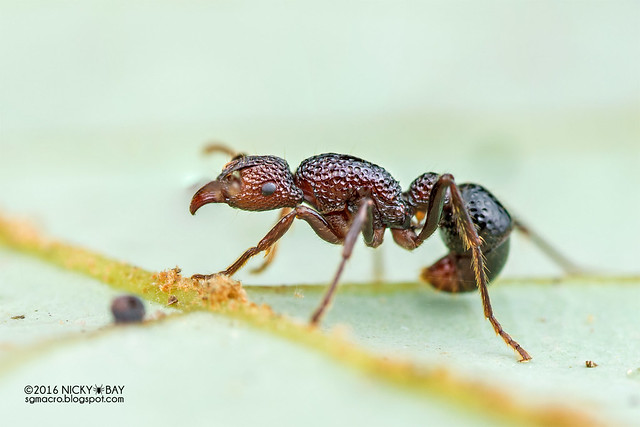
Lepidoptera: Butterflies, Moths
I didn’t shoot any butterflies nor moths, but I did photograph some of its larvae.
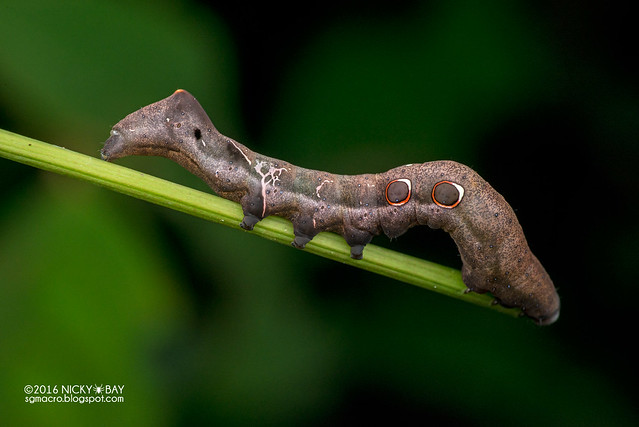


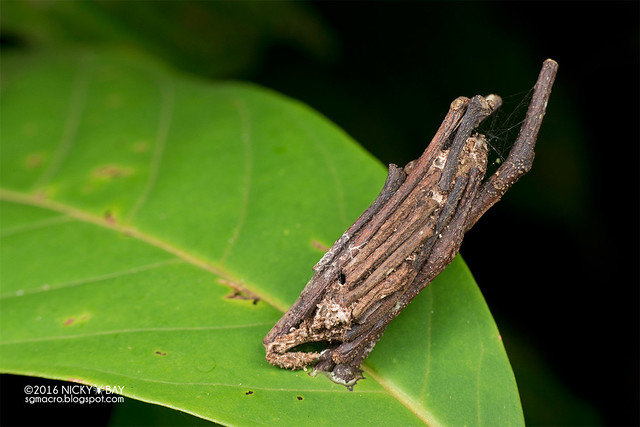
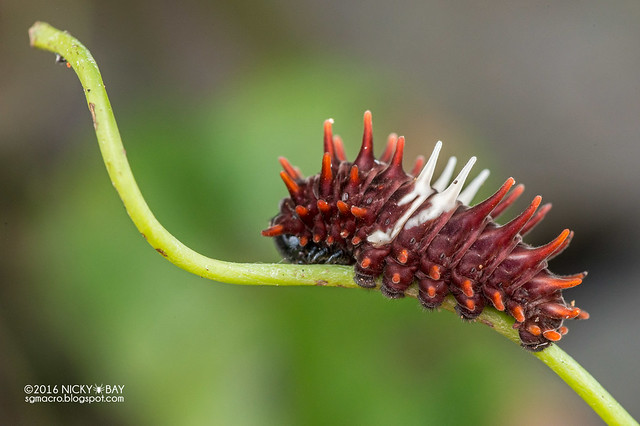
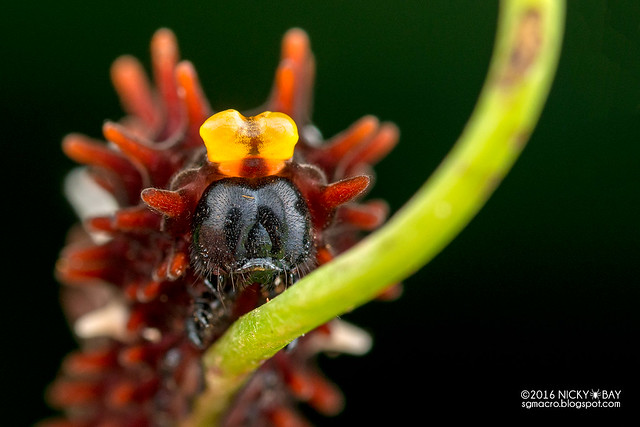
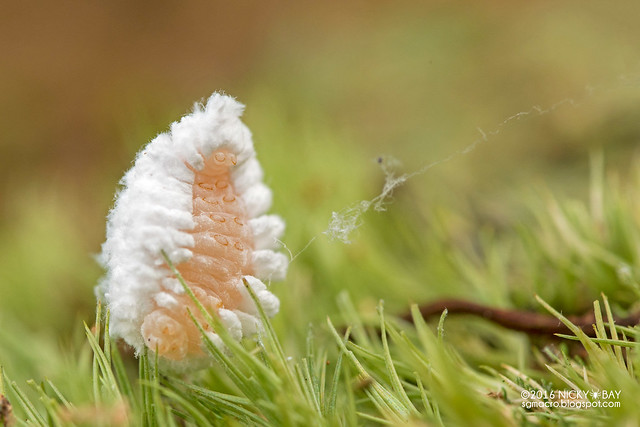
Coleoptera: Beetles
We had hoped to see some really exotic looking beetles, but it seemed that the weather had taken its toll and we only saw a couple of beetles.
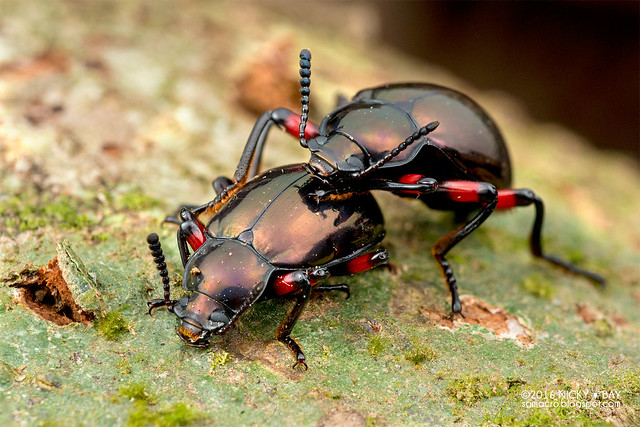
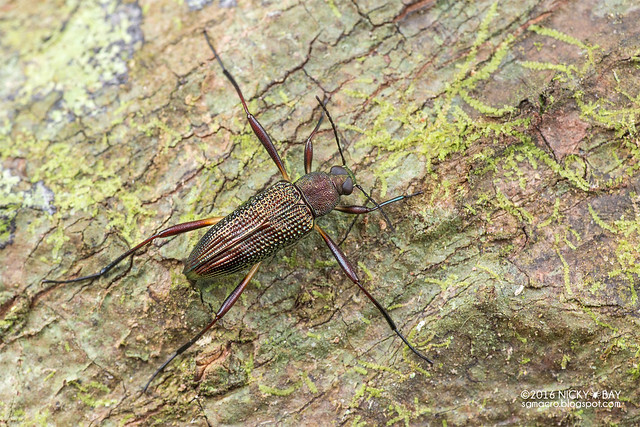
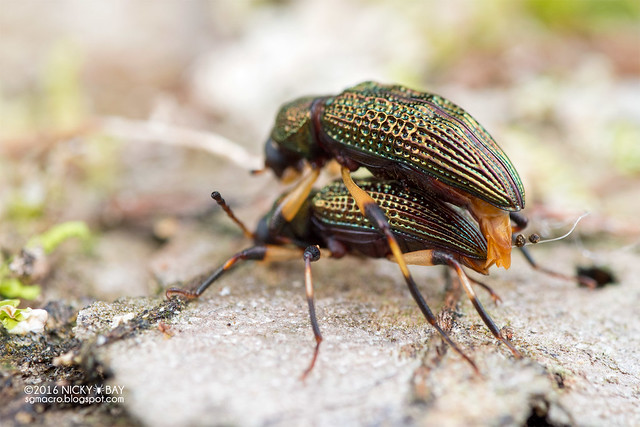
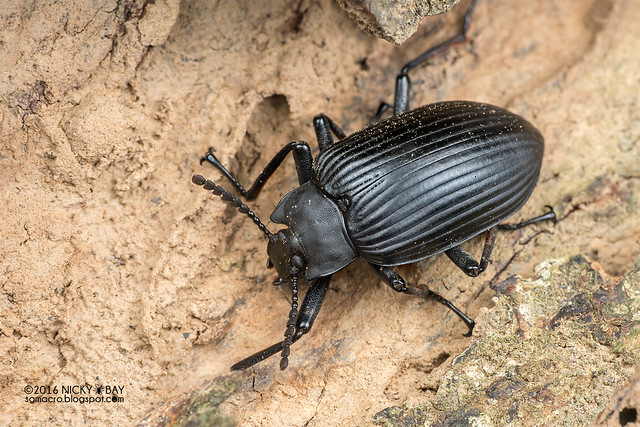
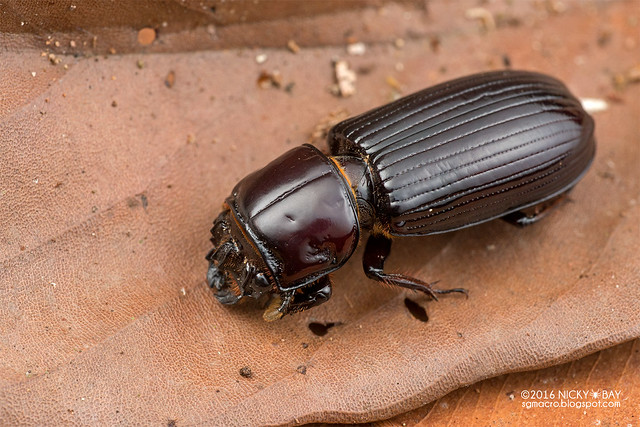
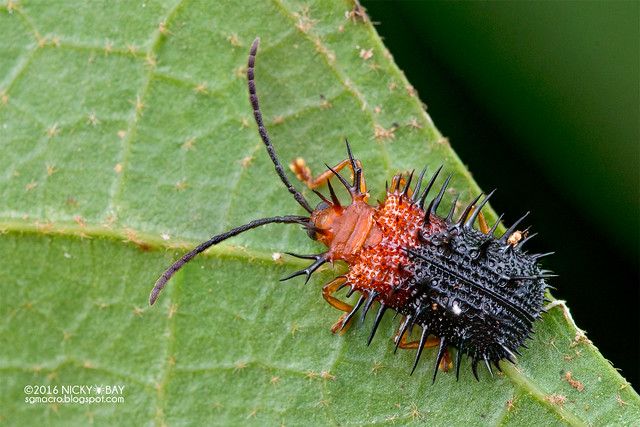



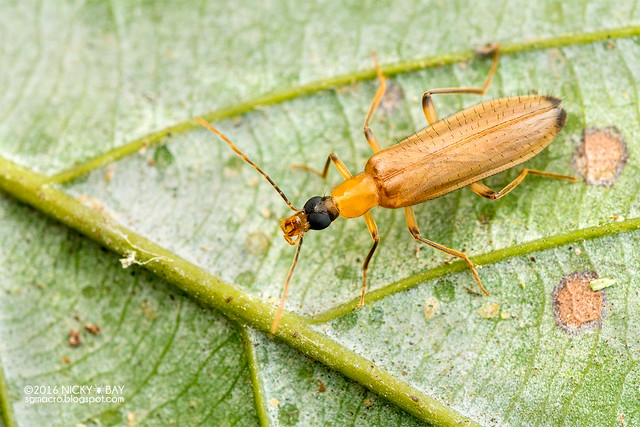
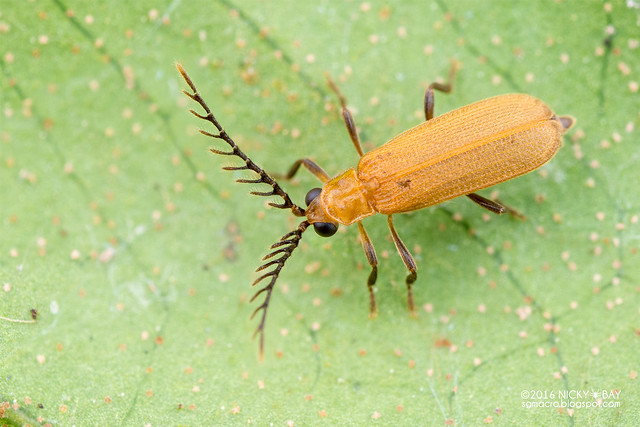

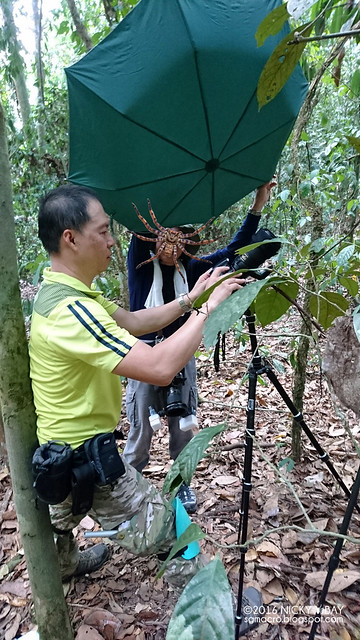
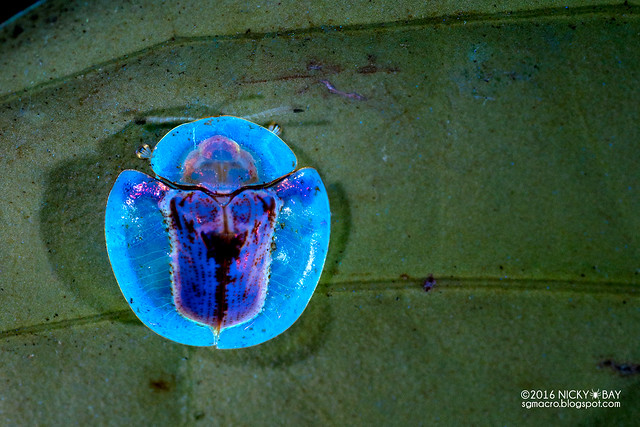

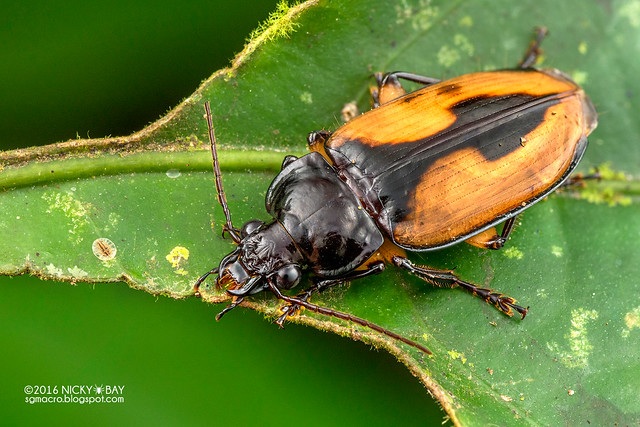
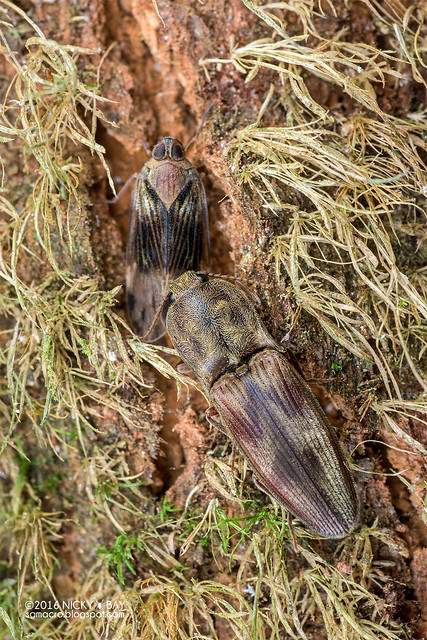
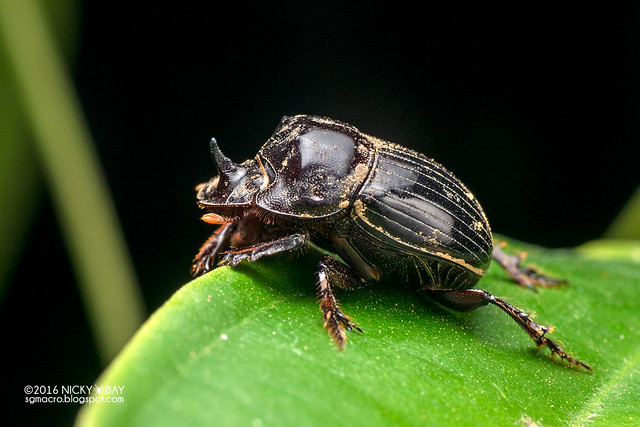


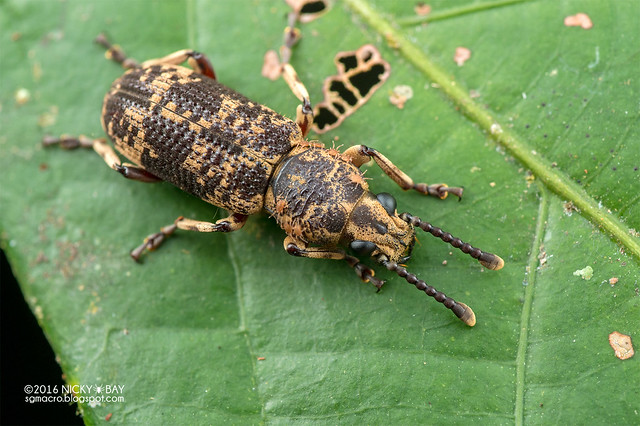
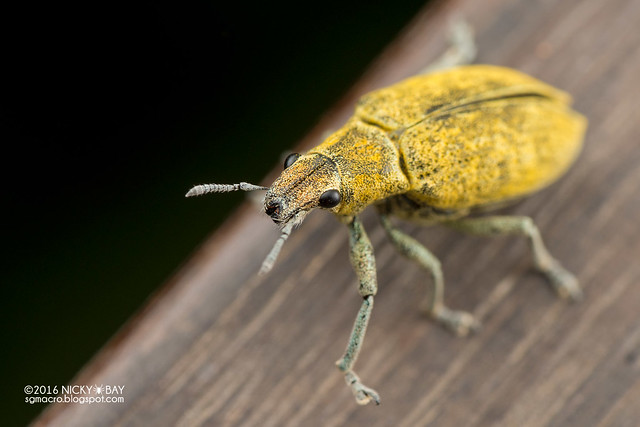

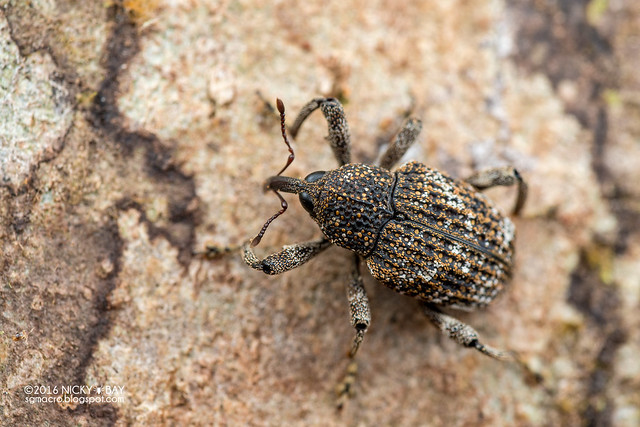
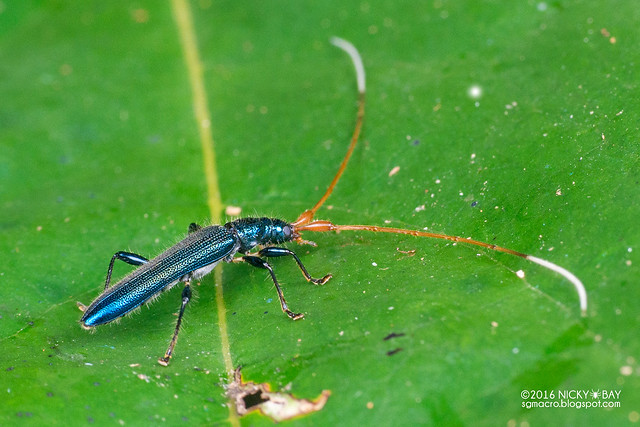
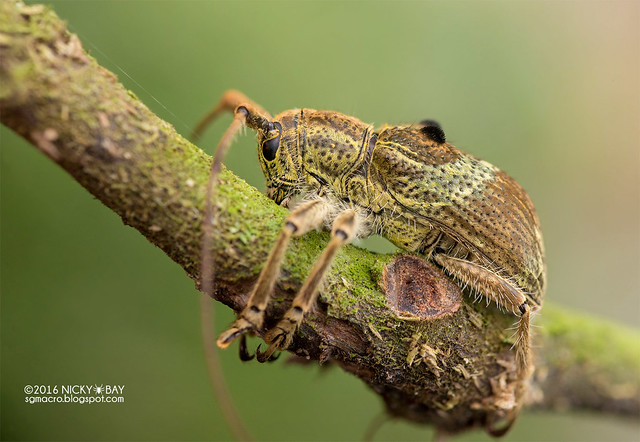
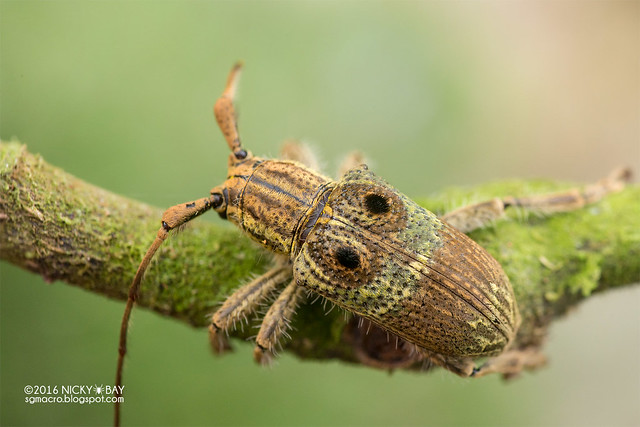
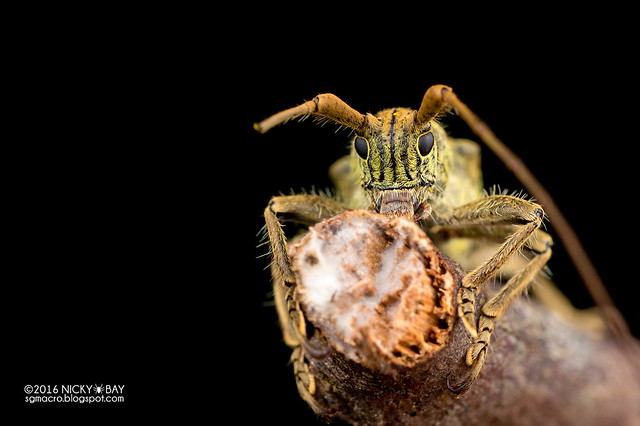
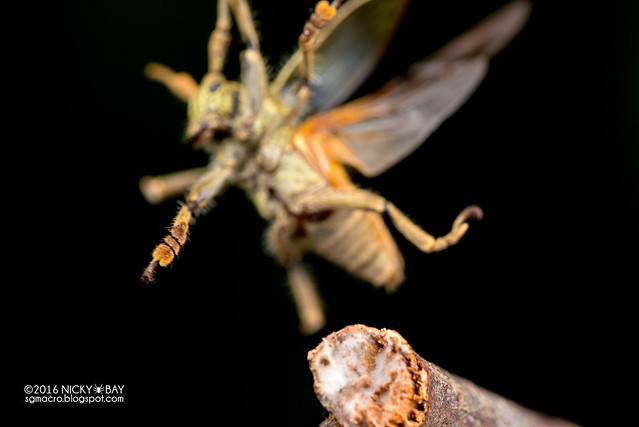
Hemiptera: True Bugs
There was the usual lantern bug, and some small little interesting bugs. Many look inconspicuous, this is just a small selection. 🙂
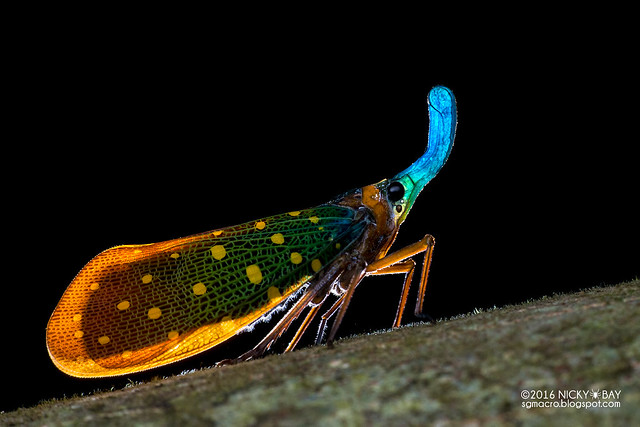
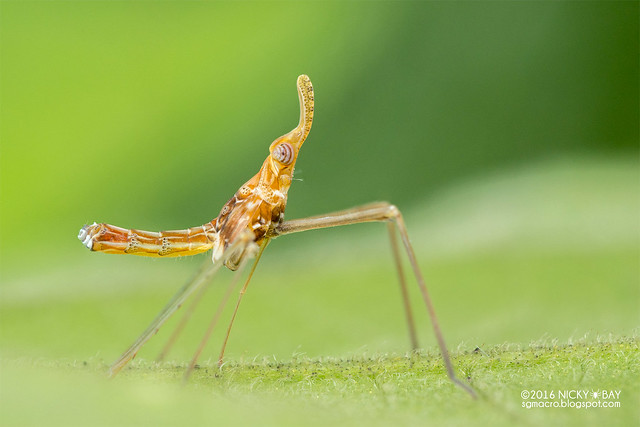
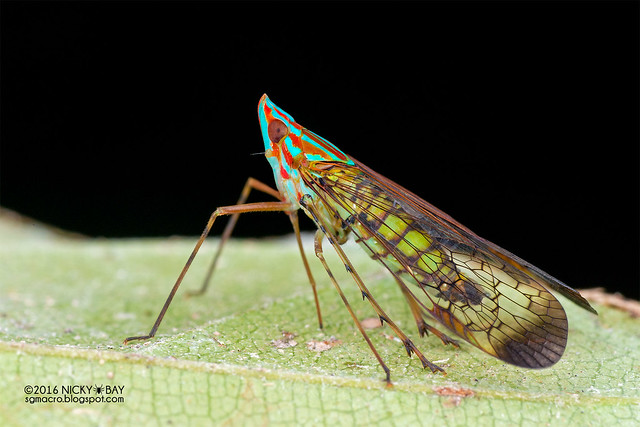
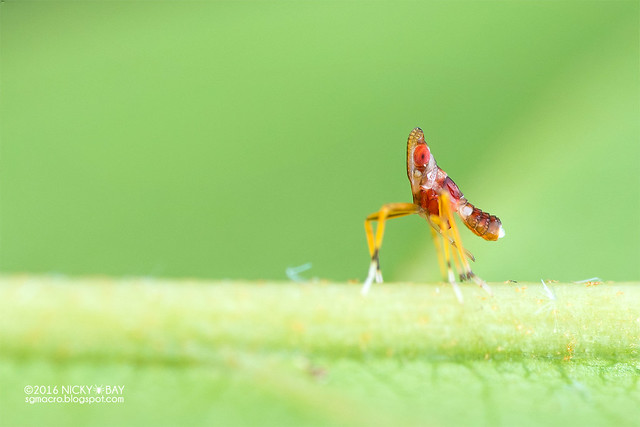
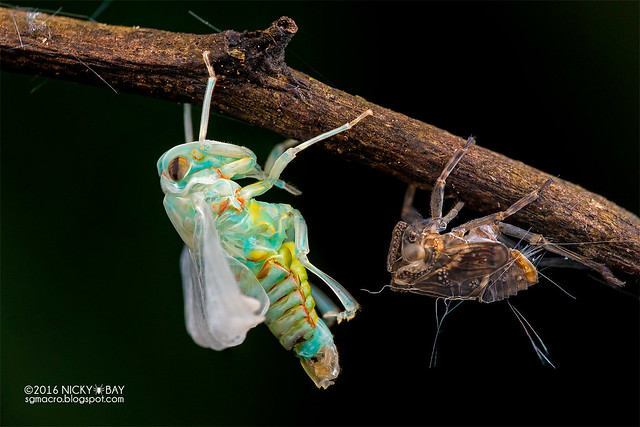

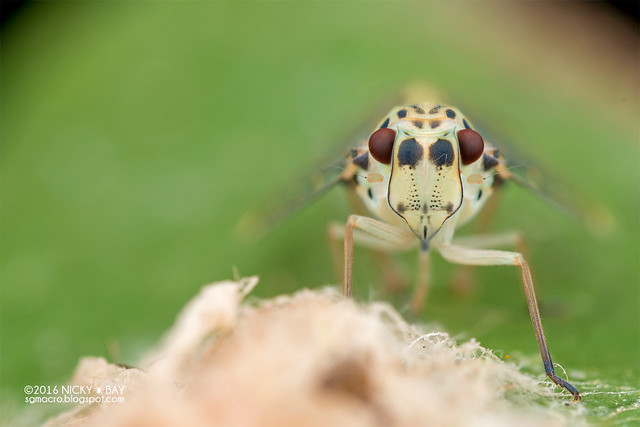
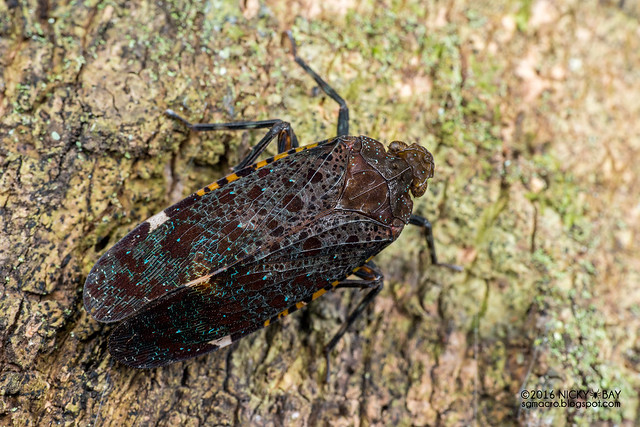

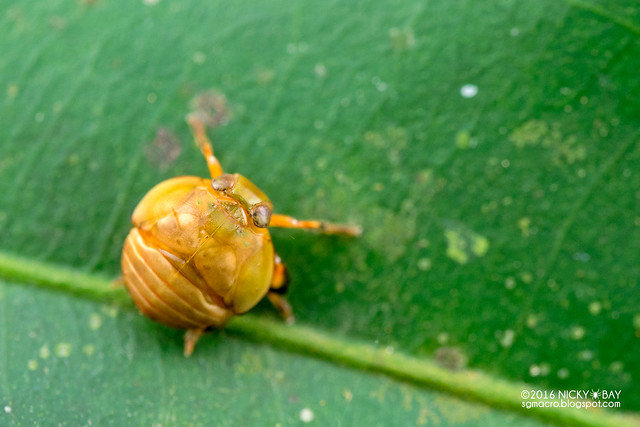
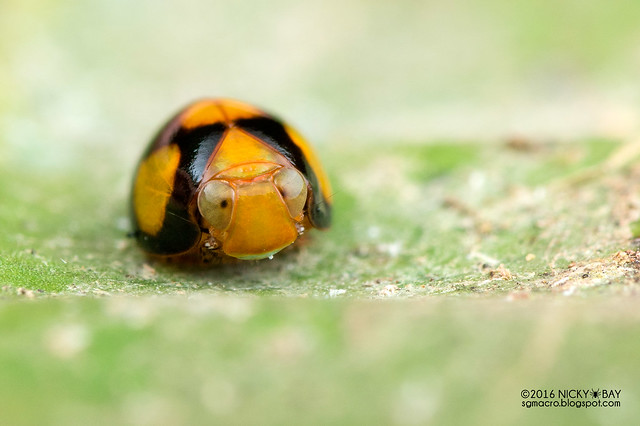
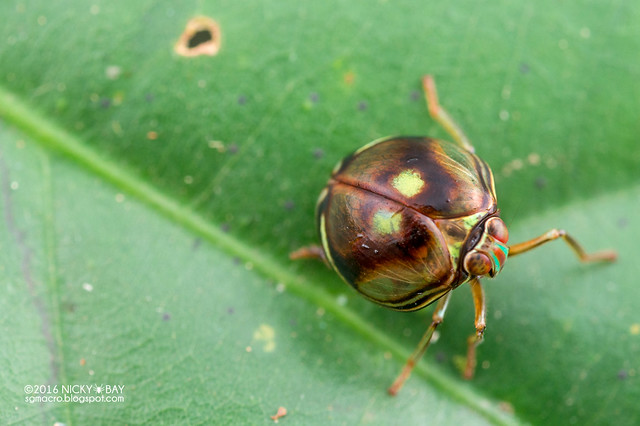
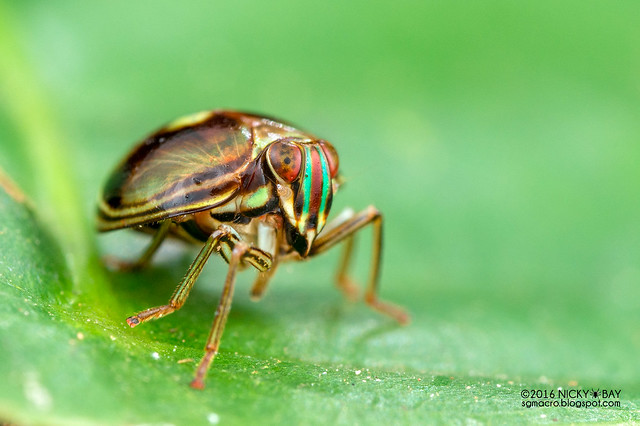

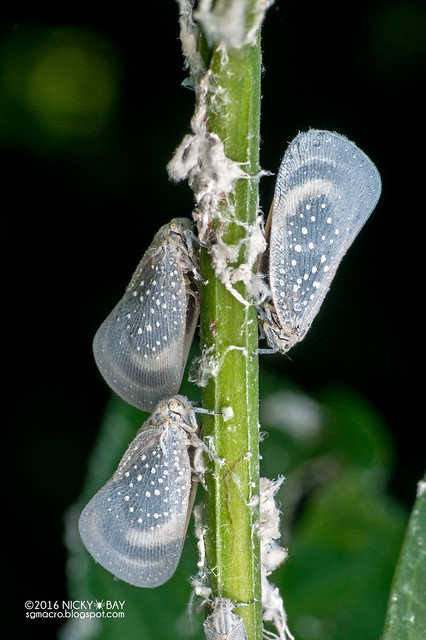
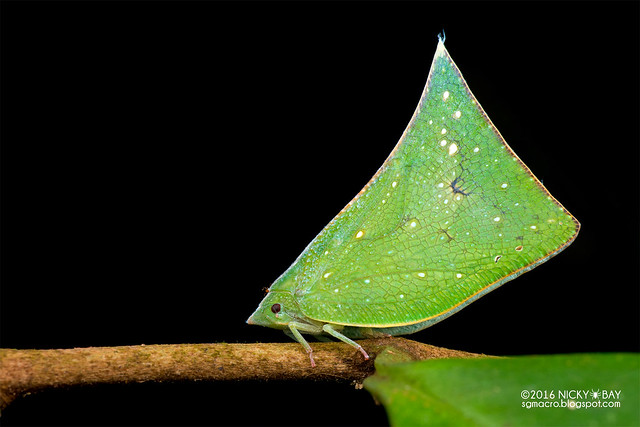
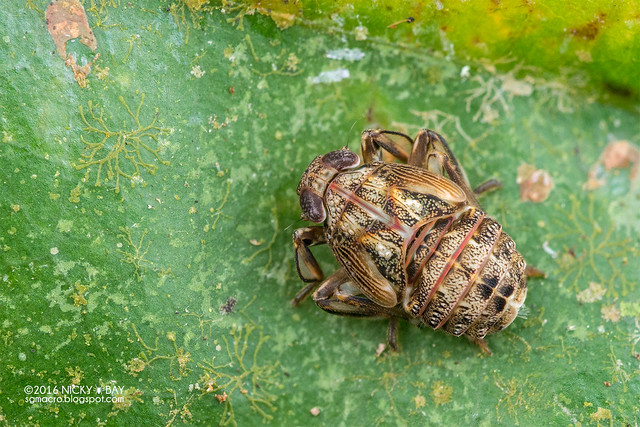
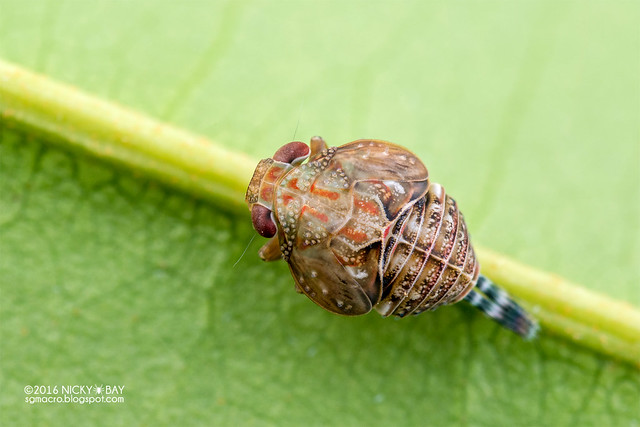
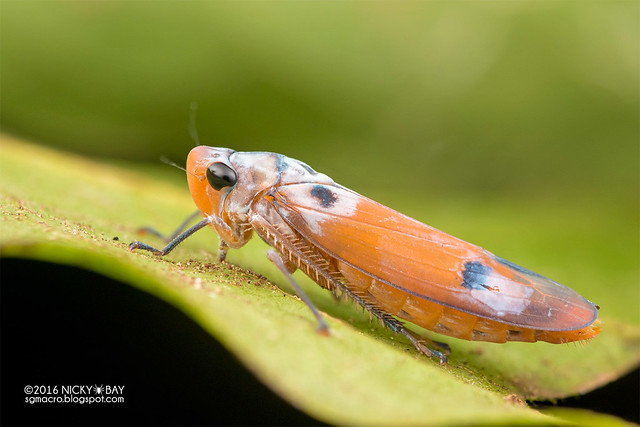
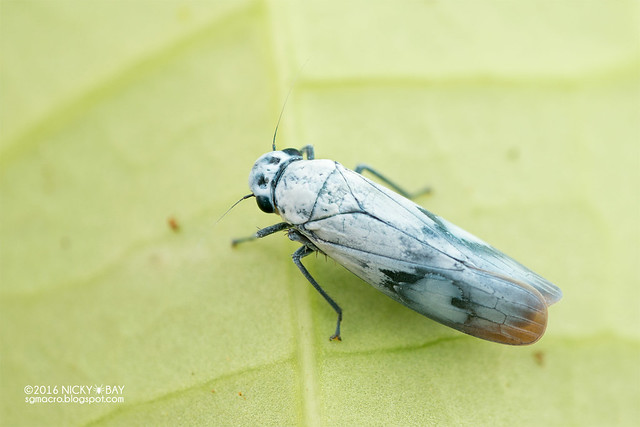
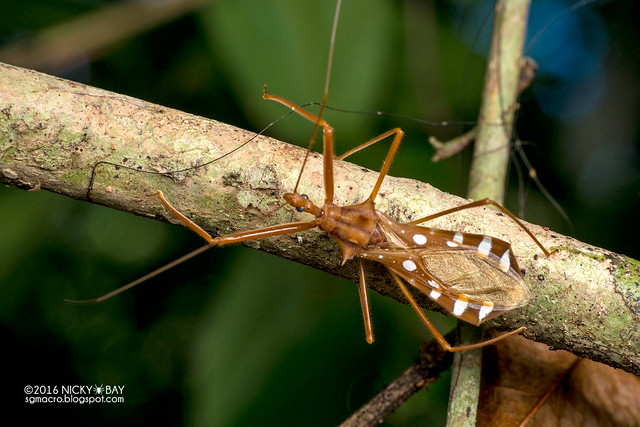
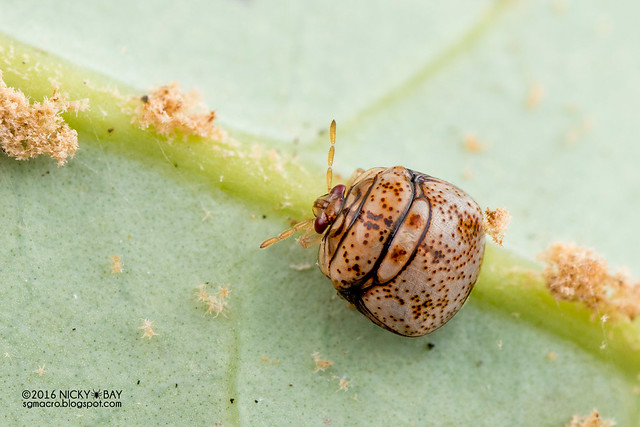
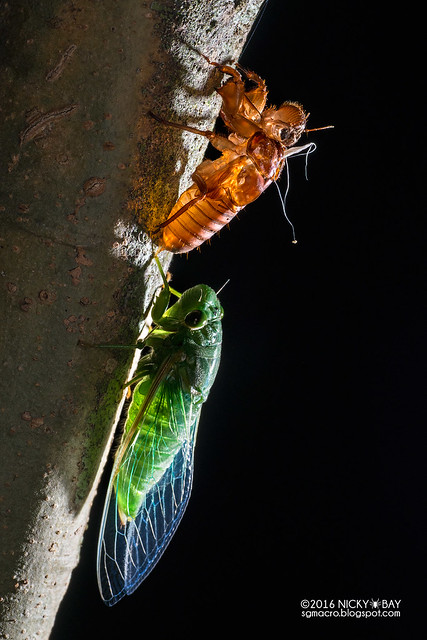
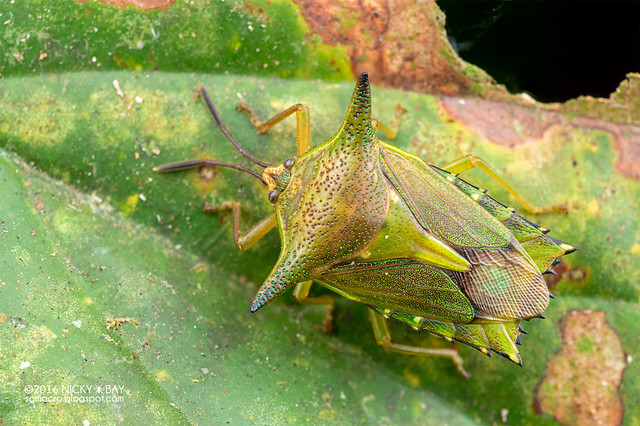
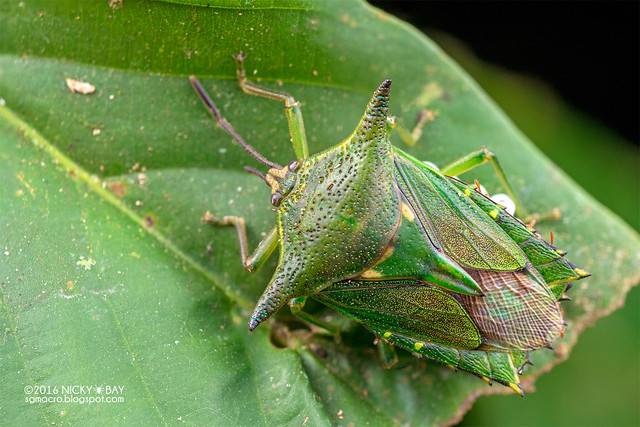
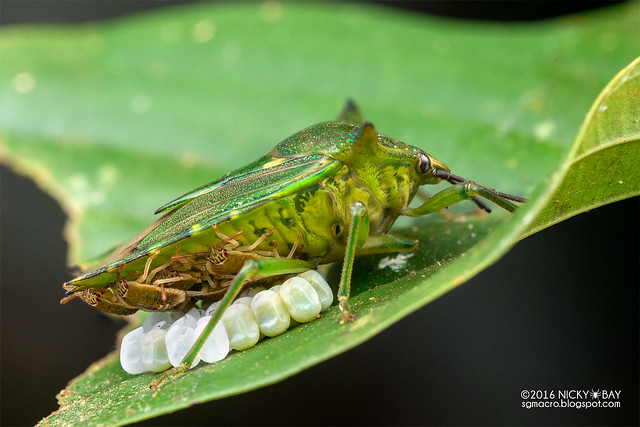
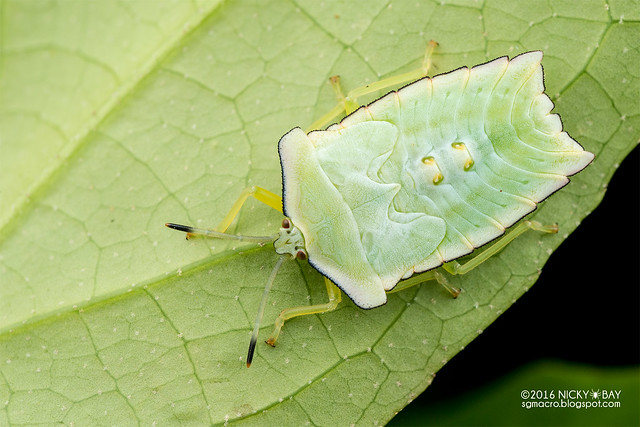
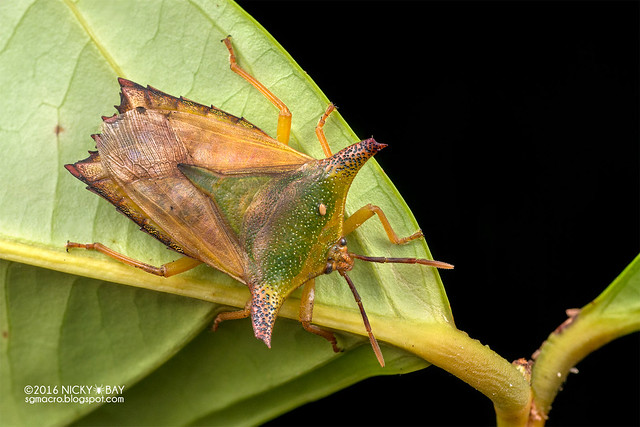
Everything Else
Everything else with too few photos to form its own category in this post.
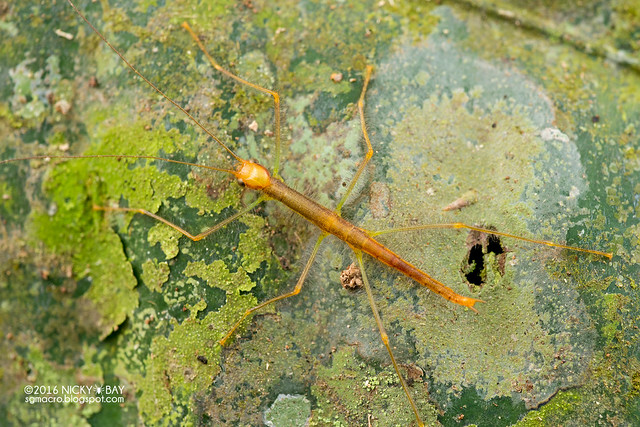
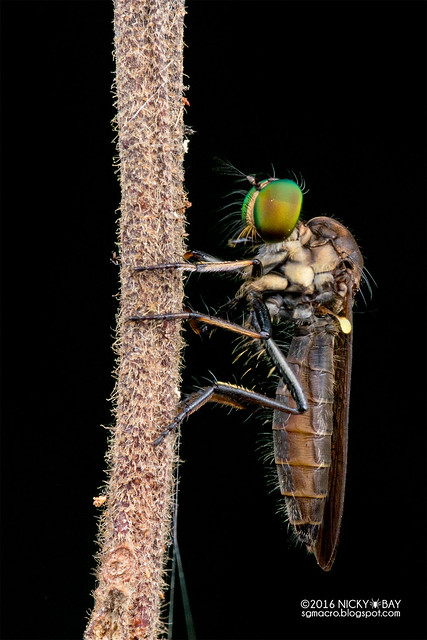
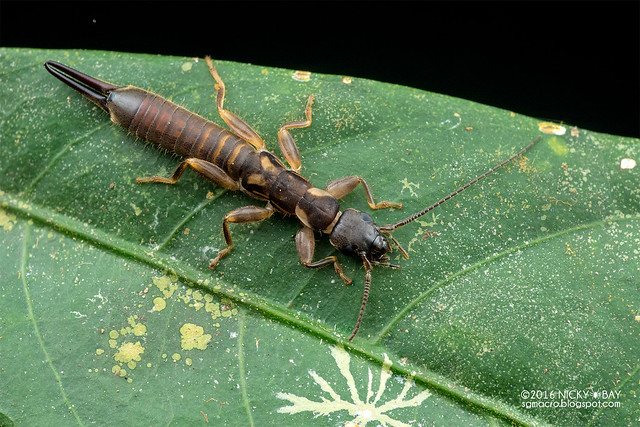
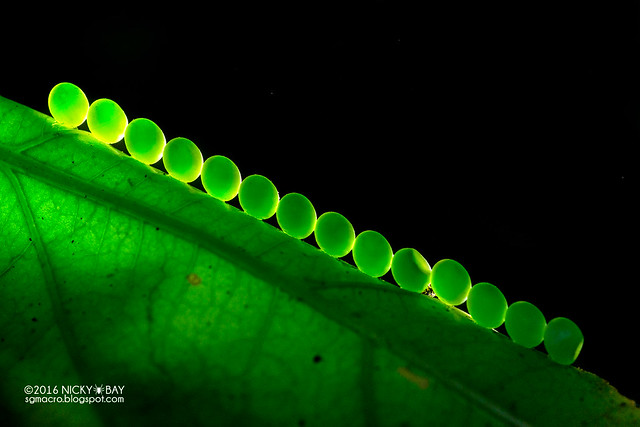
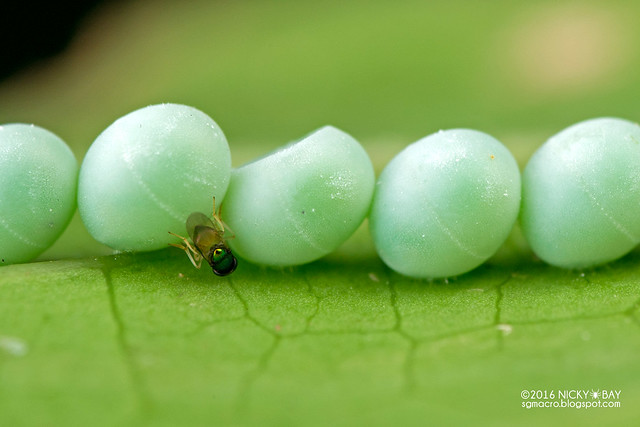


Conclusion
Although the drought had drastically reduced the fauna numbers, I had quite a number of lifers and couldn’t complain too much. Really wish I could have the chance to return during optimal weather conditions to fully experience the Lost World of Borneo!

